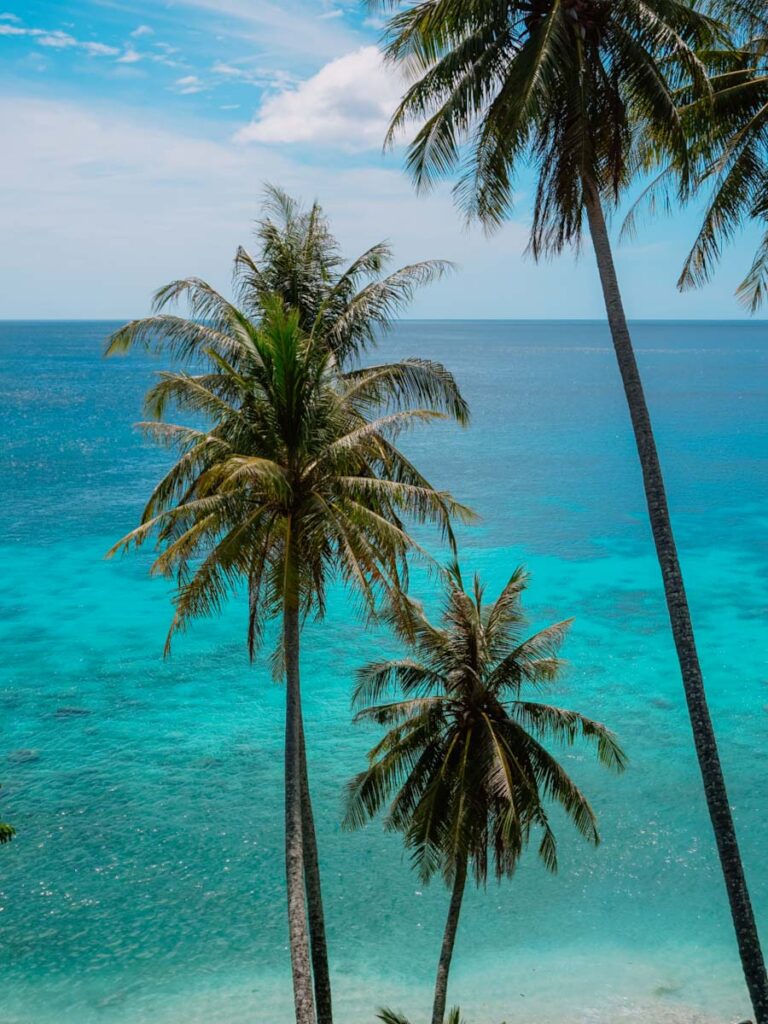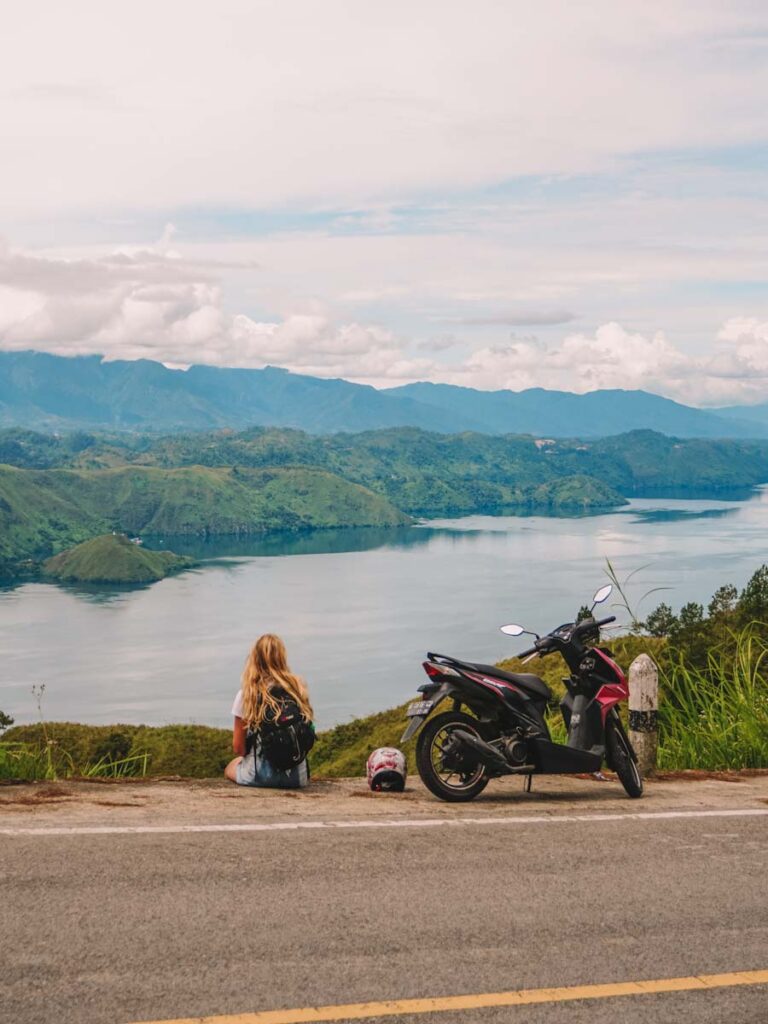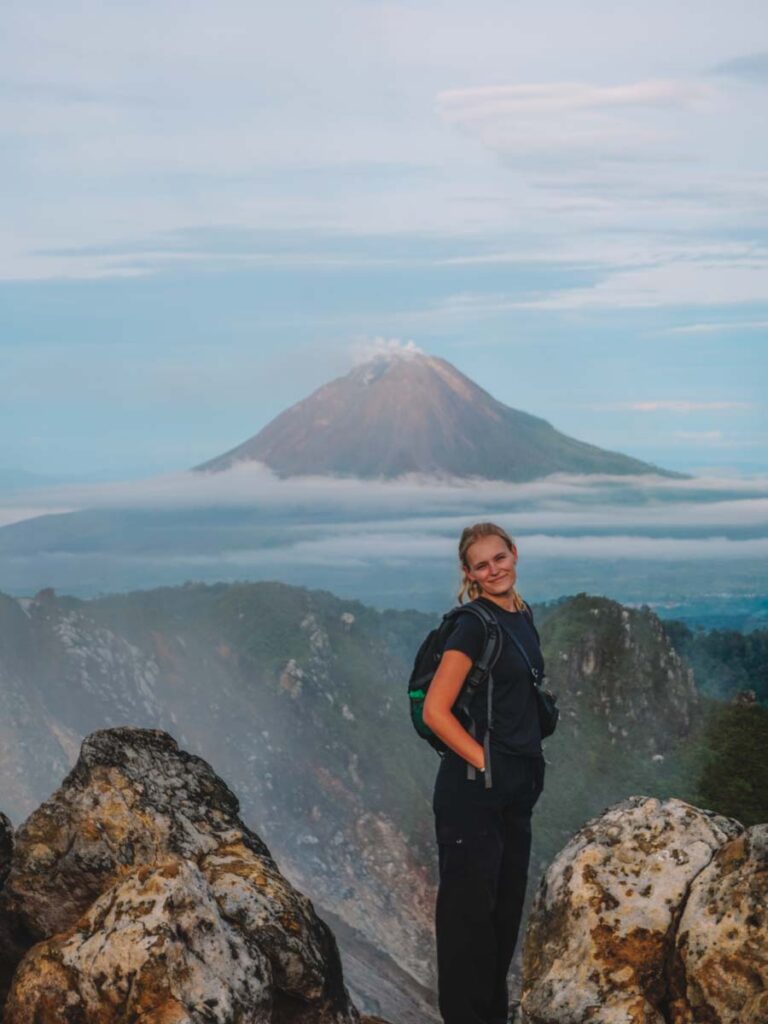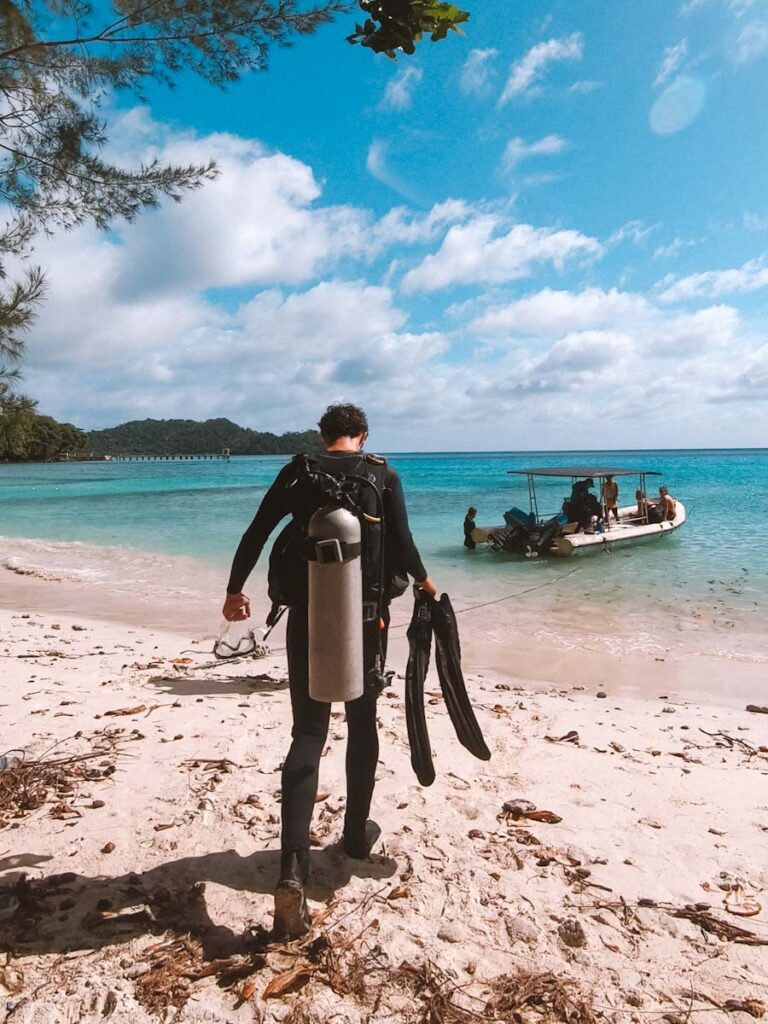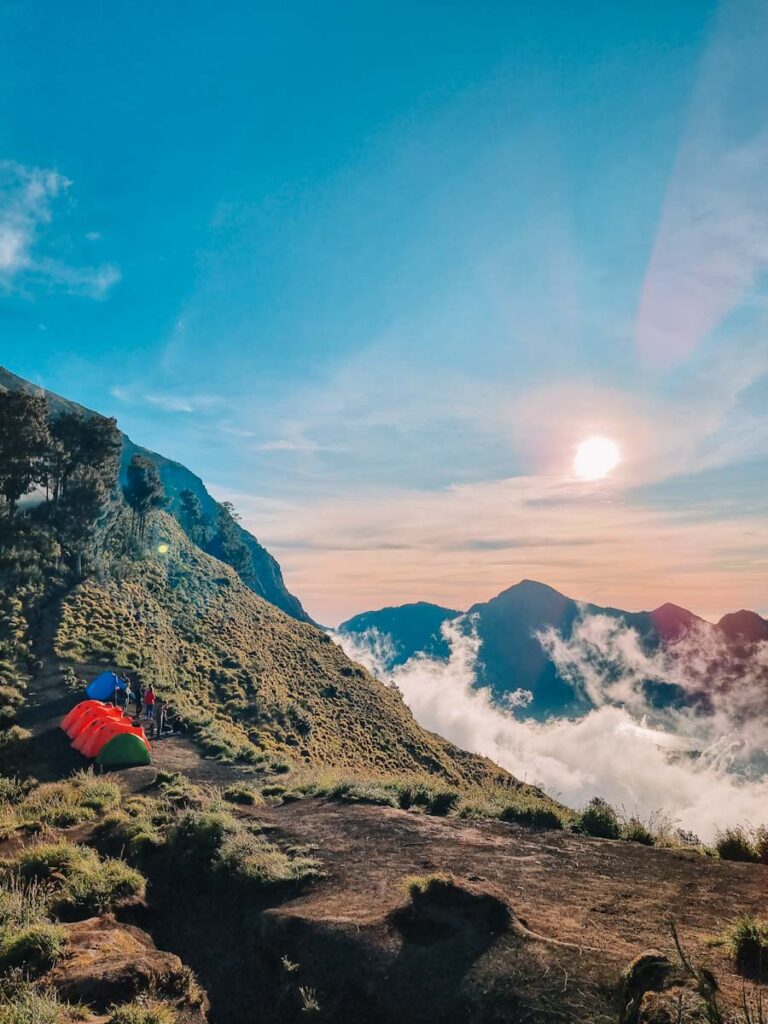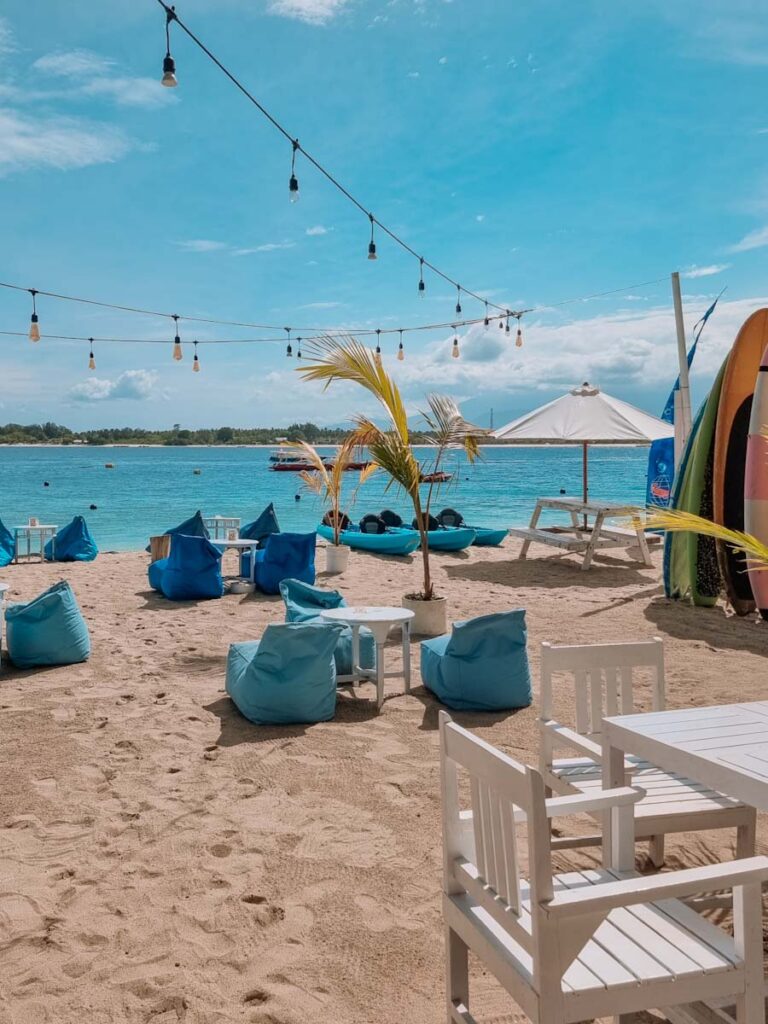How many days do you need
Unfortunately, because of Sumatra’s size, many highlights are spread out and traveling from one place to another takes a lot of time. With this in mind, we think it is possible to see the main highlights of North Sumatra in 2 weeks, but this can feel very rushed. Our North Sumatra itinerary is based on 3 weeks as this will give you enough time to see everything without being in a hurry. But feel free to change the itinerary based on your time and interests.
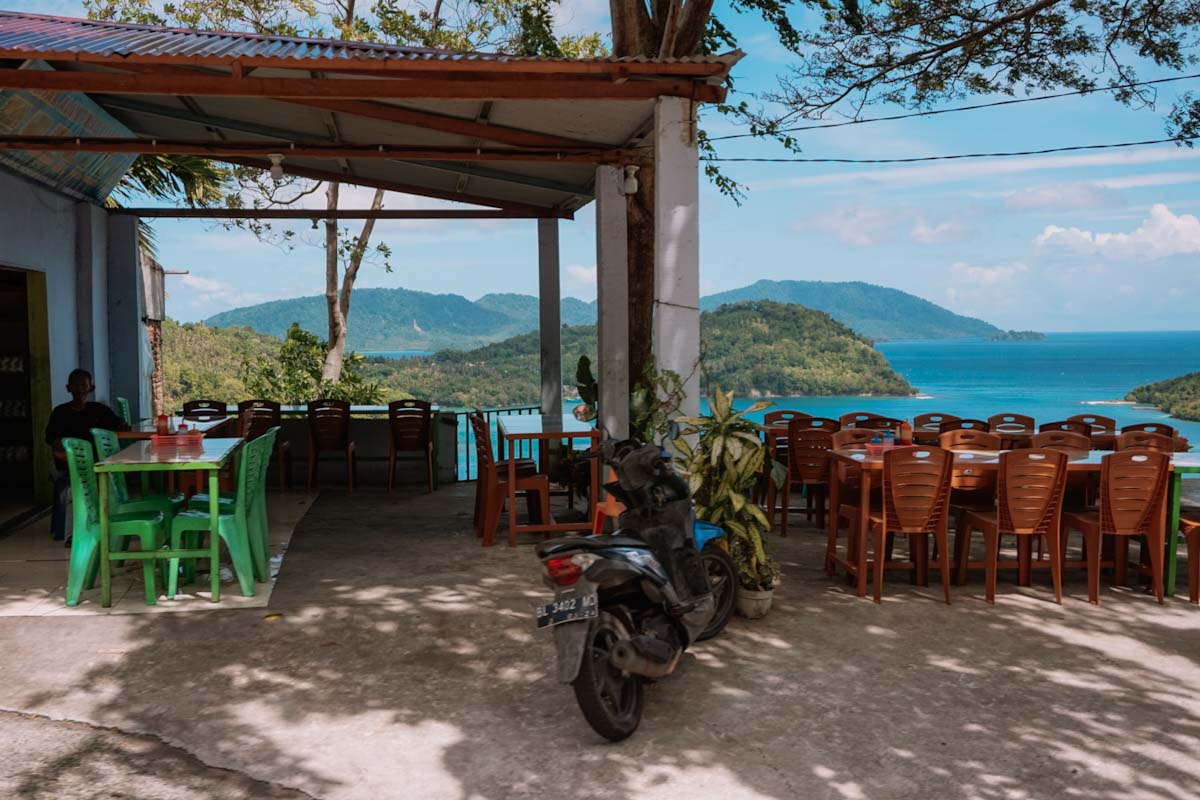
Getting around North Sumatra
Although Sumatra is well travelled, getting around can be quite difficult. There is no efficient and reliable network of public transport (yet). So unless you get private transport or a tour bus, finding your way from A to B can be confusing and uncomfortable. A lot of the public transport is very rundown and overcrowded with locals who don’t speak English and very little information is available. If you like adventure and basic ways of getting around, then this is your place! However, we recommend to find tour busses where possible, as this will be much more comfortable and save time.
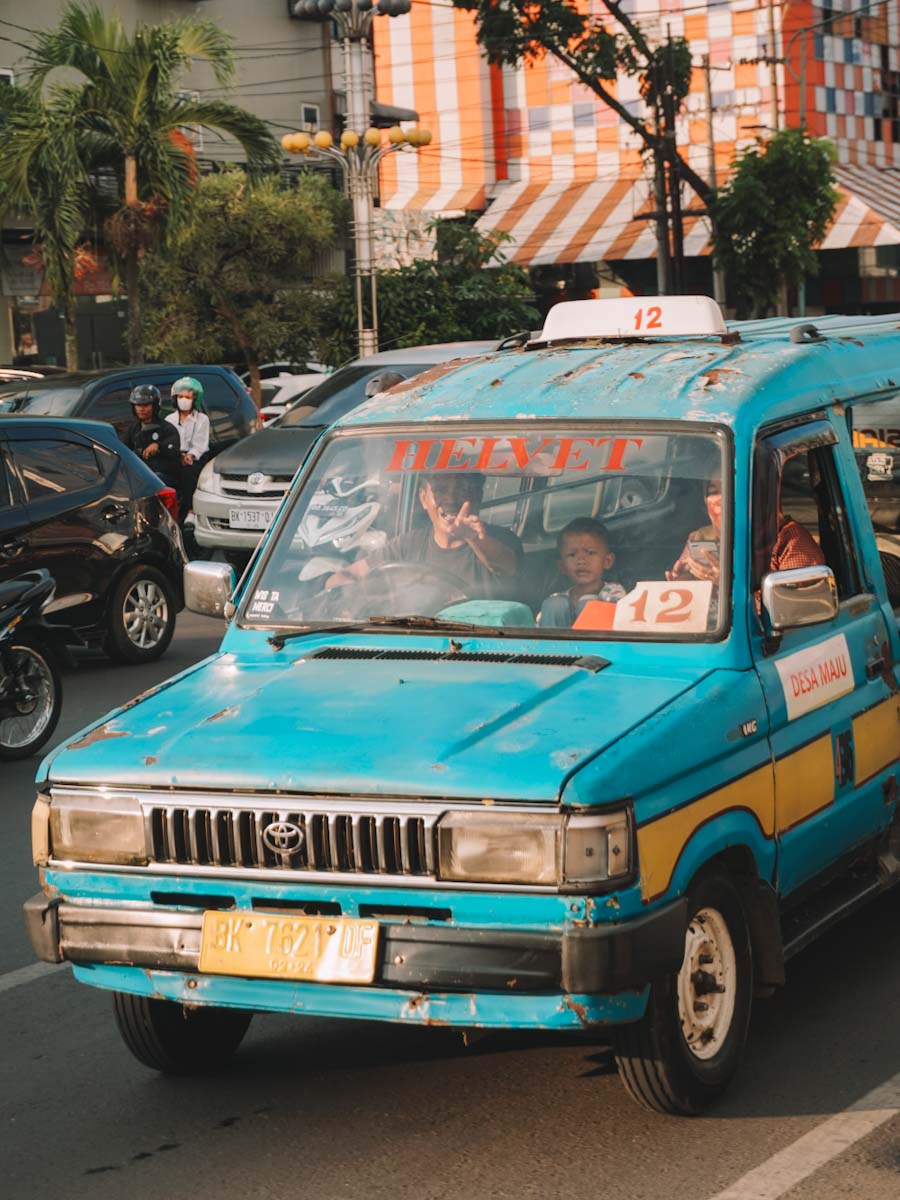
Is Sumatra worth visiting?
Yes, we definitely believe Sumatra is worth visiting! Sumatra’s north has already much to offer. From doing a jungle trek and seeing orangutans, hiking waterfalls and volcanos, and relaxing along the beach and snorkelling/diving, you can find it all! It offers the perfect diverse travel itinerary.
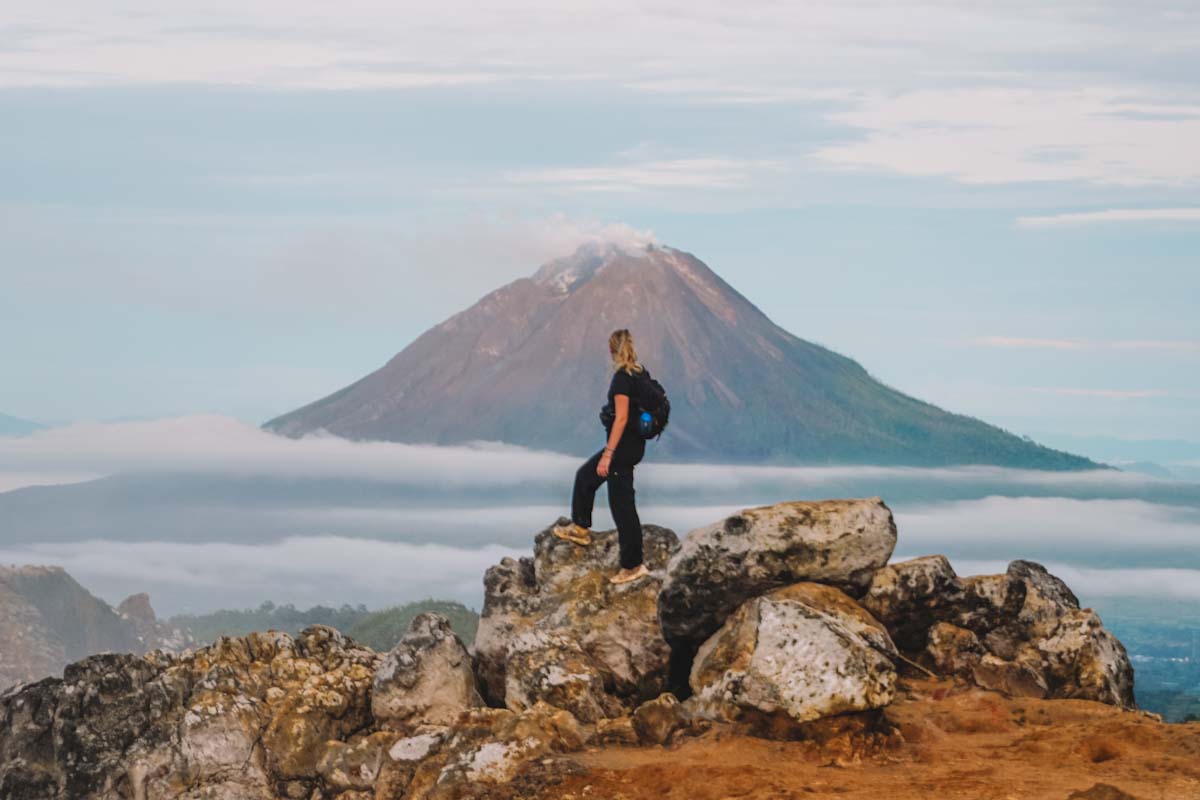
Best time to go
Sumatra’s rain season begins around November and ends in March. Since this can get pretty intense, we don’t recommend visiting then. The best time to go to Sumatra is in the dry season which is between April and October. Even though you’ll still have some occasional rain during this time, it’ll be much more manageable. Sumatra’s peak tourist season is in the months of June, July, and August. Even though you still won’t see big crowds then, the prices for accommodation are higher during this season.
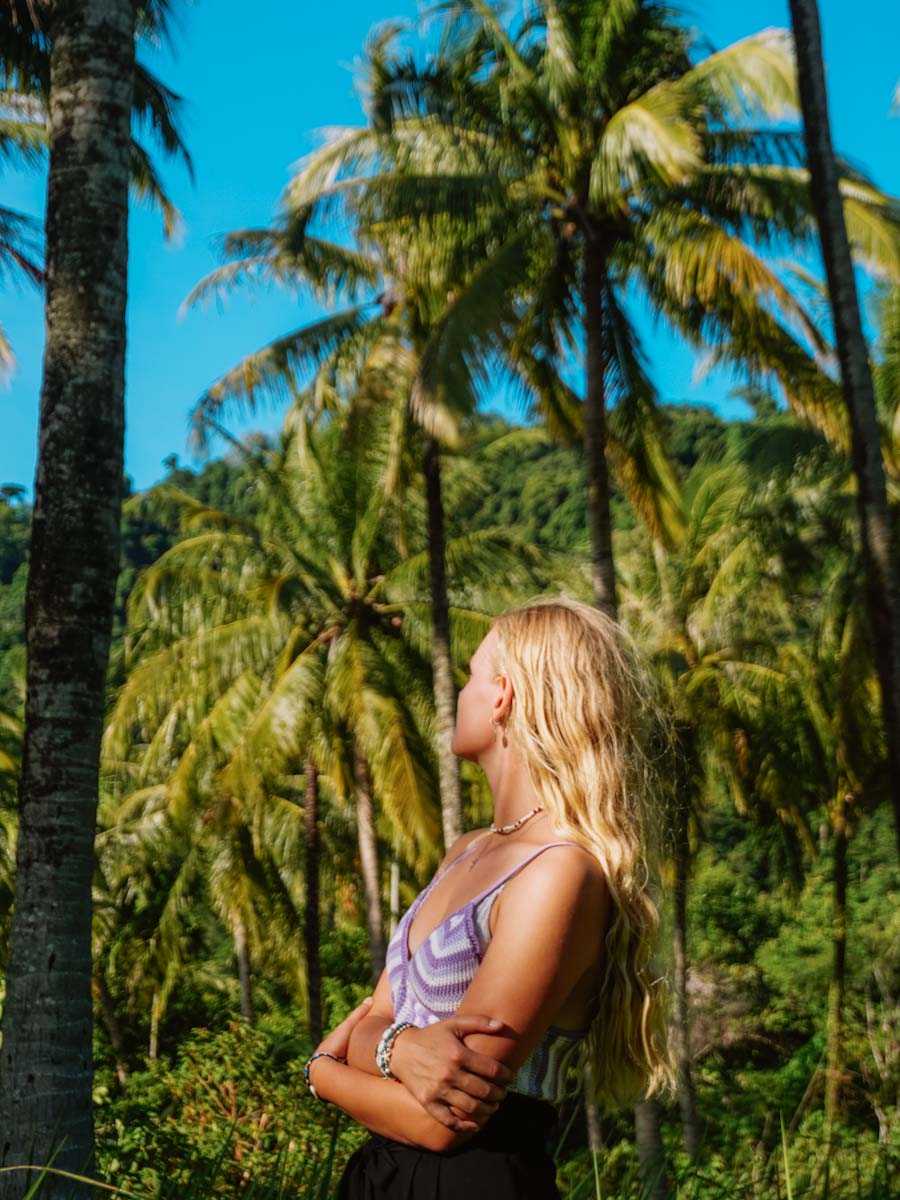
Sumatra itinerary at a glance
- Day 1: Fly in Medan & go to Berastagi
- Day 2-3: See Berastagi
- Day 4: Berastagi to Lake Toba
- Day 5-8: See Lake Toba
- Day 9: Go to Bukit Lawang
- Day 10-13: See Bukit Lawang
- Day 14: Back to Medan & fo to Pulau Weh
- Day 15-19: See Pulau Weh
- Day 20: Pulau Weh to Banda Aceh
- Day 21: Fly out of Banda Aceh
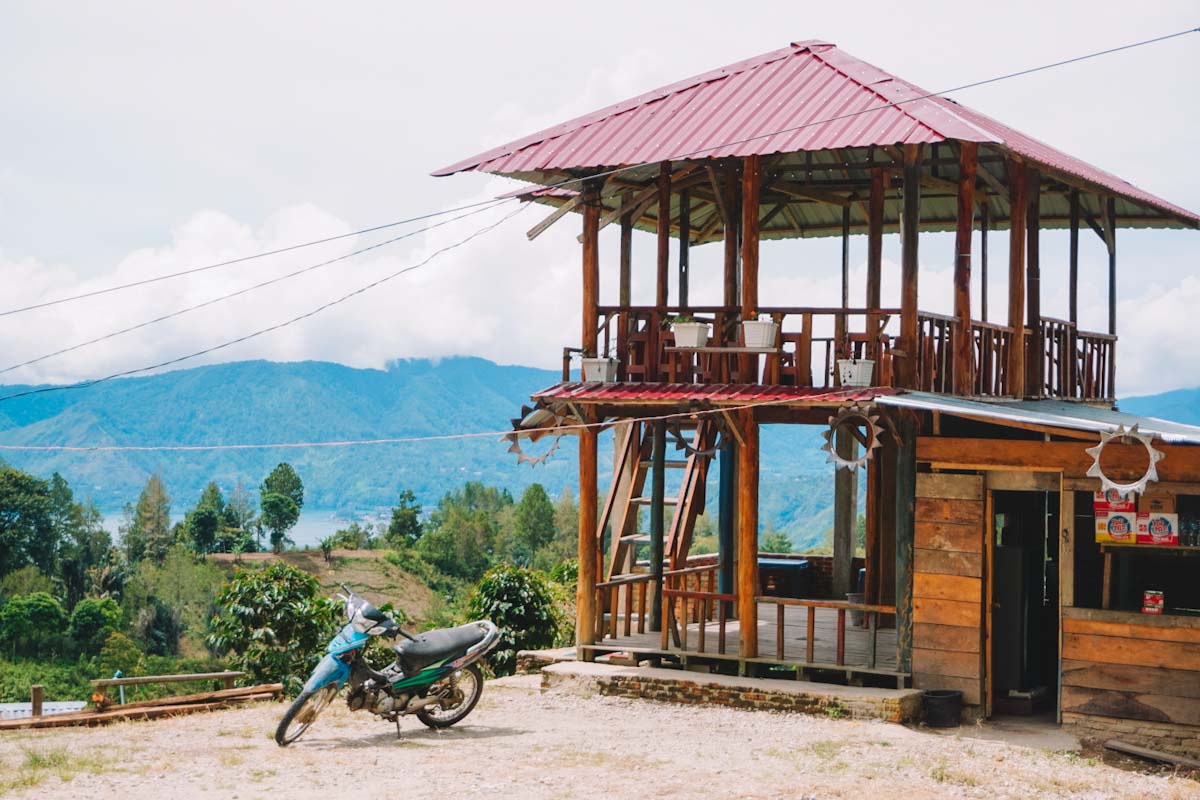
Day 1: Fly into Medan & goto Berastagi
Most travellers will get into North Sumatra through Medan, so it is best to start here. In all honesty, this massive chaotic city doesn’t have much to offer tourists, so we don’t recommend spending any time here. If you fly in late, stay somewhere near the airport as this is the best place to get transportation from the next day.
Medan to Berastagi
From Medan, there are two main ways to get to Berastagi. The best way is to get the Almasar bus, that leaves from the train station at Kualanamu airport. A ticket costs around 50,000 IDR (€3) and the trip should take 2.5 hours (depending on the traffic).
Alternatively you can get a taxi/grab or private car. We just took a grab because it worked out to be cheaper than the bus as we were with 4 people.
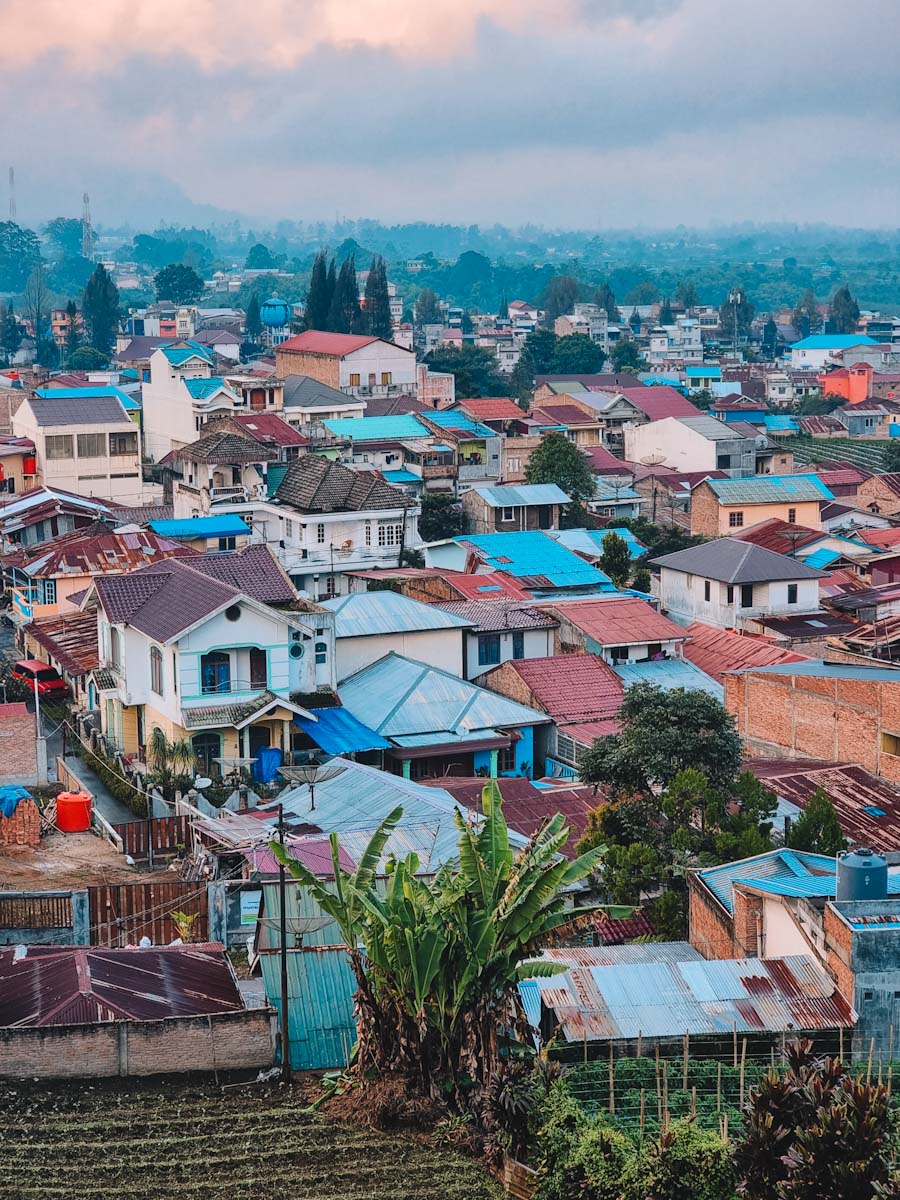
Where to stay in Berastagi
There is limited accommodation in Berastagi, but we’d definitely recommend staying at Kaesa homestay. Kaesa, the owner, is extremely kind and provides you with a lot of information. The rooms are large, comfortable and the freshly cooked breakfast is delicious too! You can find Kaesa Homestay on booking.com here!
Wanting to book?
Follow the links below for all your accommodation, transport, & activity needs!
Day 2-3: See Berastagi
Berastagi is a charming little town located between Medan and Lake Toba. It is famous for its diverse fruit and vegetable markets and its unique location between 2 active volcanoes. So whether you want to do some hiking, relax in a hot spring, or explore the local markets, you will definitely find something you like in Berastagi. We recommend staying for about 2 nights here. Read all about what to do in Berastagi in our previous post Top 6 things to do in Berastagi, Sumatra!

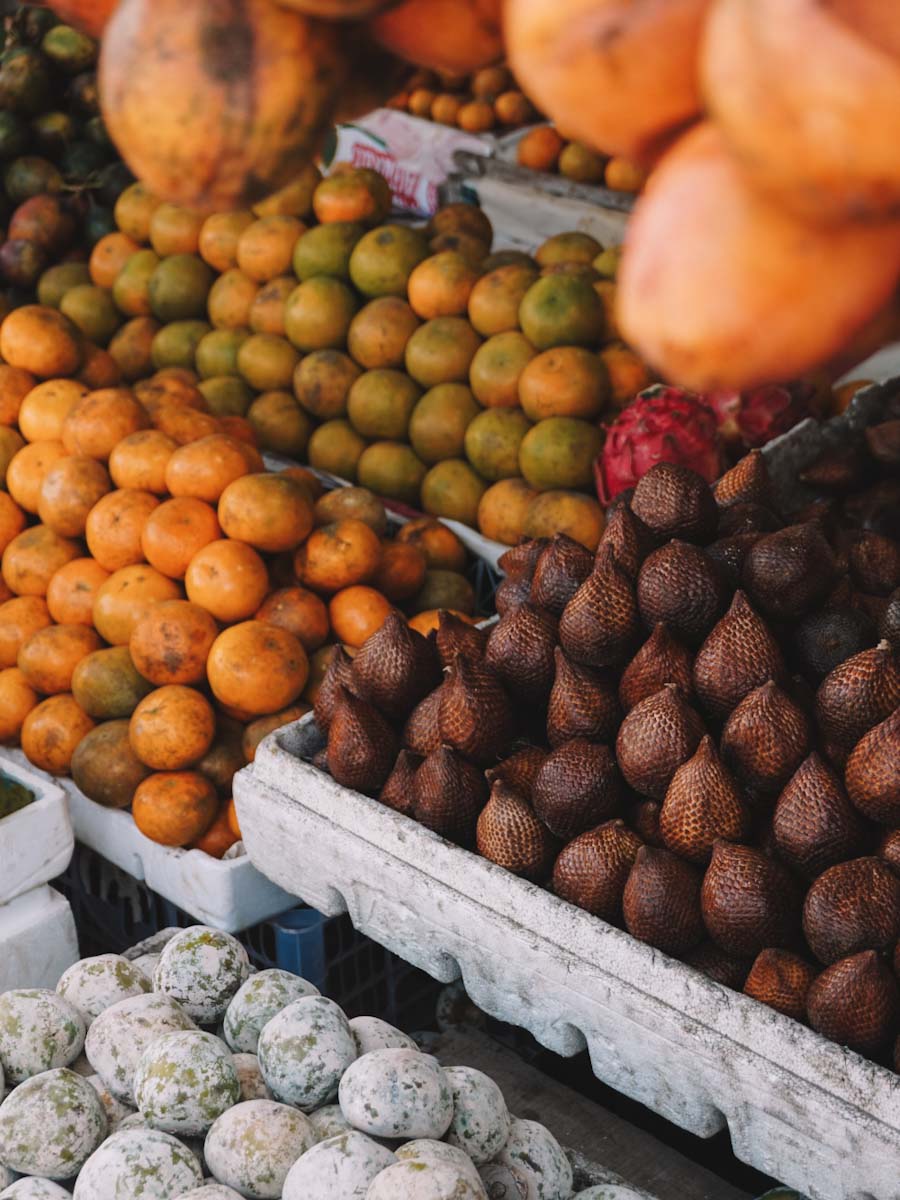
Day 4: Berastagi to Lake Toba
After exploring Berastagi, it is time to make your way to Lake Toba. You will want to stay on Samosir Island, the island inside Lake Toba. On Samosir Island we recommend staying in the town called Tuktuk. This is where most people stay as it has the most accommodation options and restaurants. Getting from Berastagi to Lake Toba by public transport is quite a process, which is why we’ve written about it in a separate post. Read all about it here: How to get from Berastagi to Lake Toba!
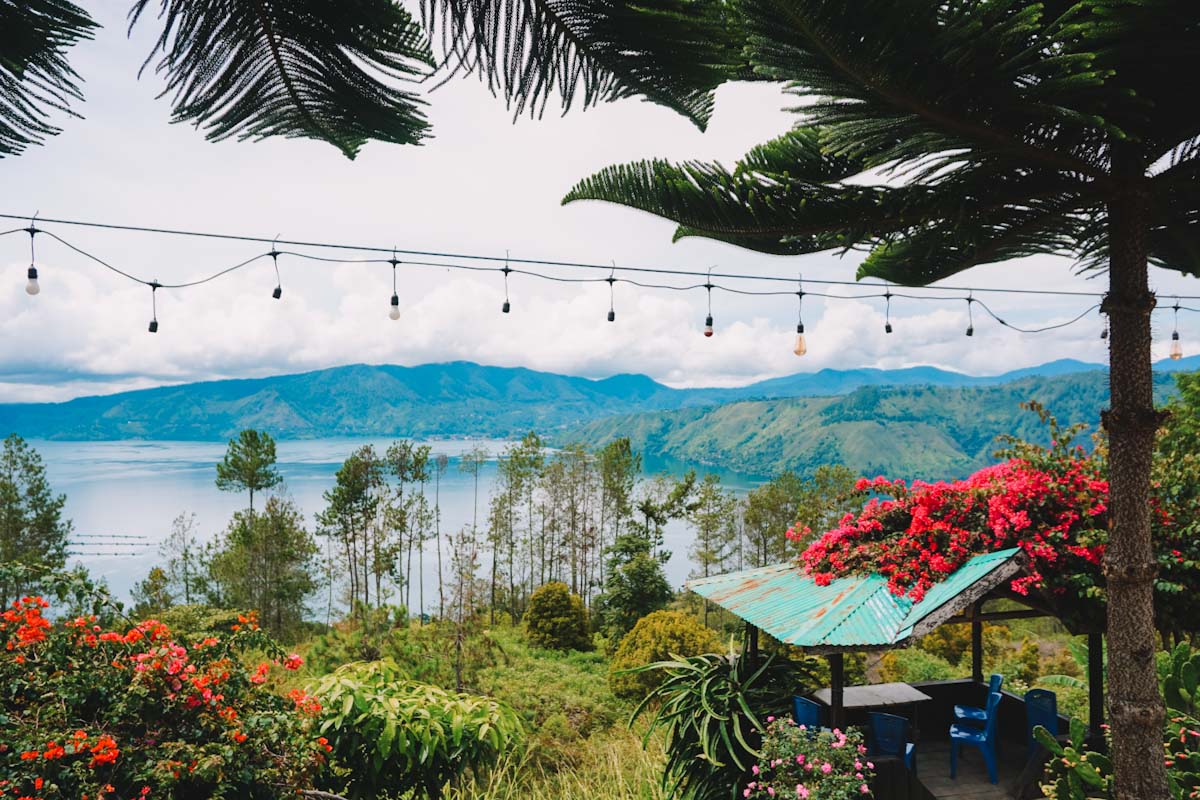
Where to stay in Lake Toba
In Tuktuk, the main city on Samosir island, there are a number of resorts or homestays available. We stayed at Carolina Resort and it was great. They have a range of rooms available depending on your budget and are situated right on the water and have a large restaurant overlooking the water.
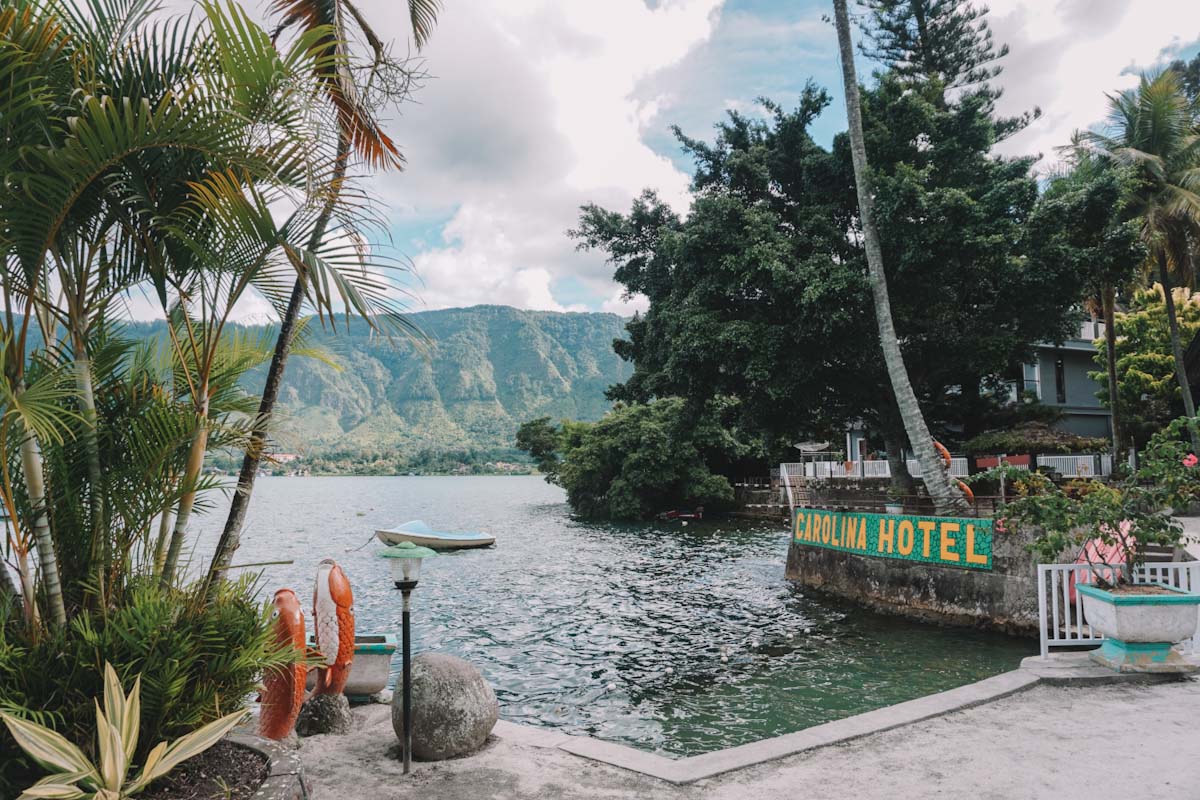
Day 5-8: See Lake Toba
Lake Toba is one of the most unique locations in Indonesia. It formed after a volcanic eruption 75,000 years ago. The eruption was so large it caused global climate change and had a big impact on the flora and fauna. Lake Toba is the largest volcanic lake in the world and it has a max depth of over 500m! It is a great spot to wind-down, enjoy the nature, and admire one of the most significant natural formations in the world. Here are some of of our recommendations of things to do!
Explore Samosir Island by motorbike
We couldn’t believe that Samosir island is almost as big as Singapore! And it’s just an island in a lake. The roads along the coast offer amazing views so we highly recommend hiring a scooter to get around. There are many rentals in Tuktuk and most start at 100,000 IDR a day.
We didn’t really follow any exact route, we just cruised around and enjoyed the views. But we came across a cute local cafe and amazing viewpoint (Panatapan Pinus cafe and Parhallow viewpoint) that are worth checking out!
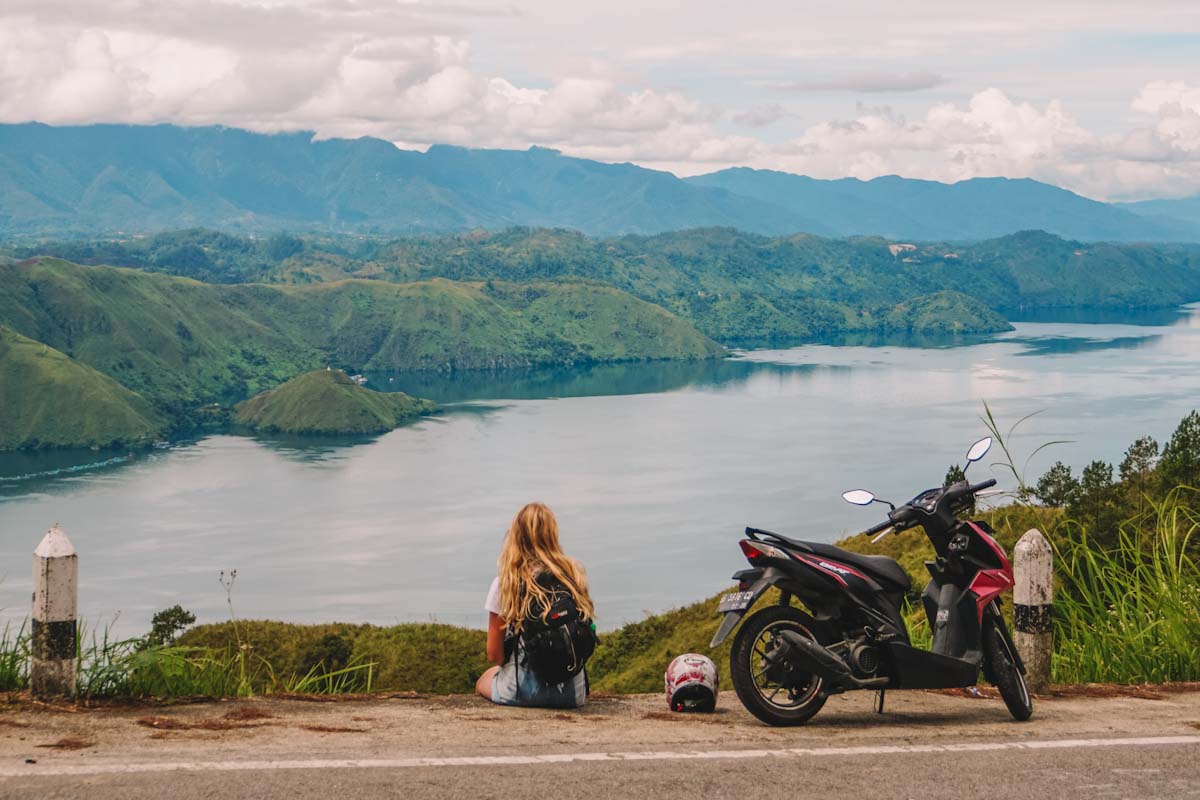
Visit the Batak villages
The Batak villages are unique to North Sumatra. It is the term used to refer to one of the largest indigenous groups of Indonesia. They are especially famous for their traditional houses. The most notable villages are Tomok, Ambarita, and Simanindo. If you want to learn more about the unique traditions of the Batak people, you should visit Huta Siallagan in Ambarita. This is a small exhibit that gives you a glimpse into the history of the area.
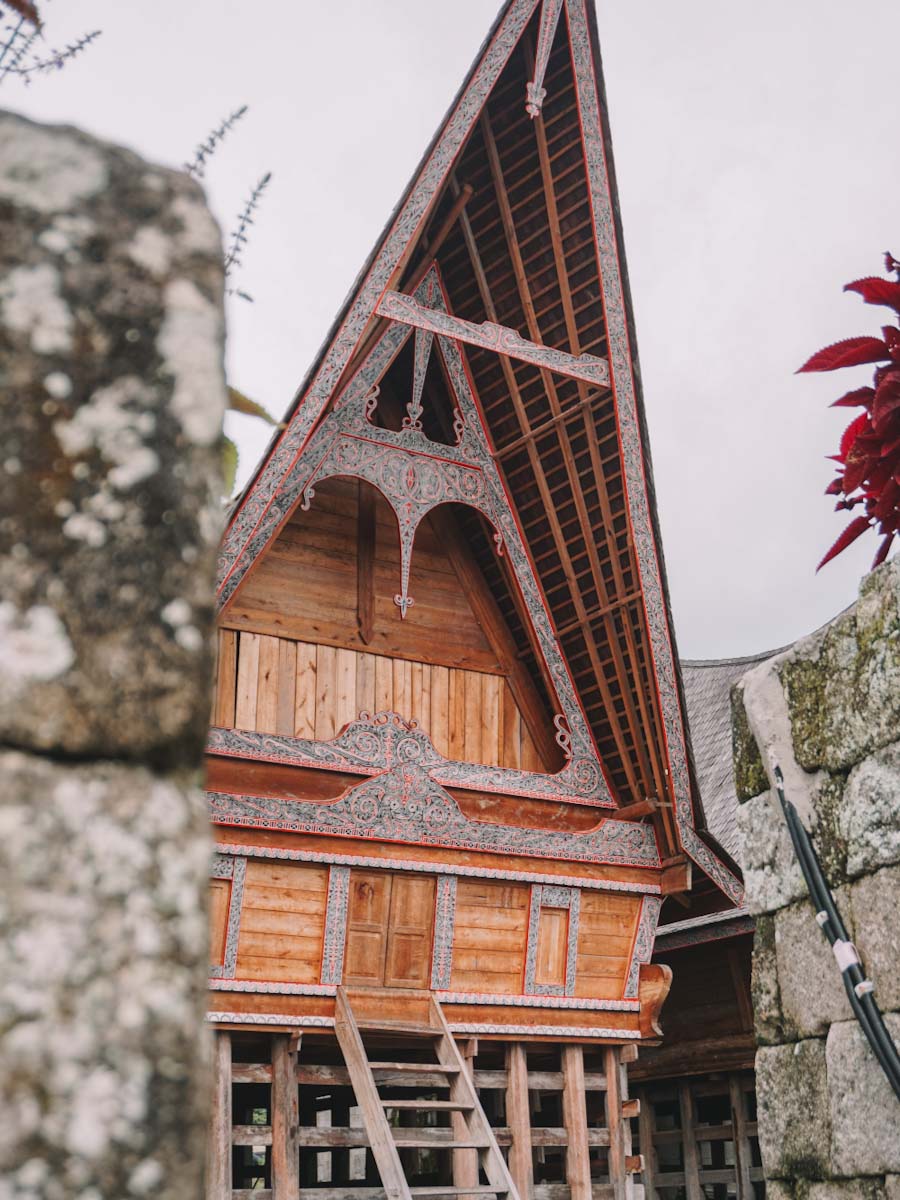
See the local markets
Throughout Tuktuk you’ll come across many small markets. In Ambarita, right next to Huta Siallagan, there is a market street that is worth a look. Also in Tomok there is a souvenir street that sells many unique Lake Toba souvenirs.
Roam around Tuktuk
Tuktuk is the main town on a little peninsula of Samosir Island in Lake Toba. Besides many accommodation options, you’ll also find many restaurants and bars here that are worth checking out! Some of our favourites are: Today’s Cafe, Rumba Restaurant, and Poppy’s Restaurant & Guesthouse!
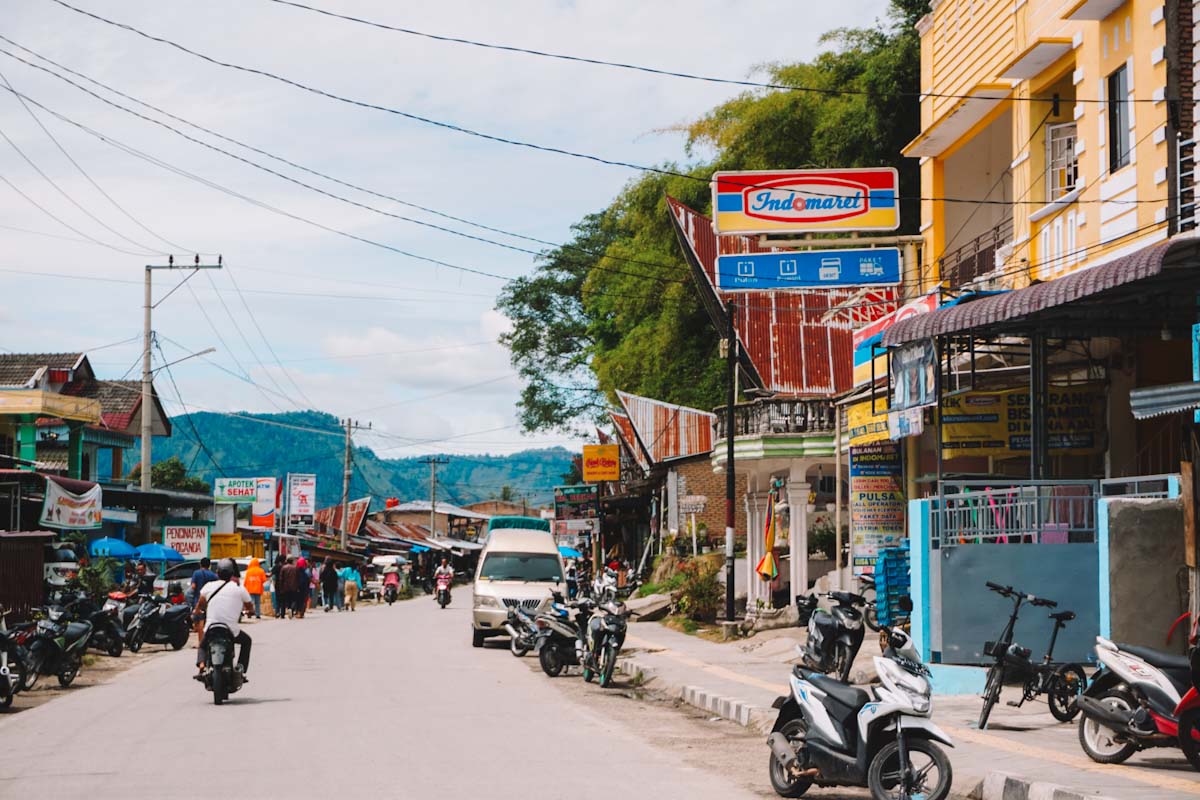
Relax by the lake
One of the best things to do around Lake Toba is to simply enjoy the lake. Go for a swim to cool down or relax lakeside with a drink. You can hire kayaks all around Tuktuk and even go for a boat ride.
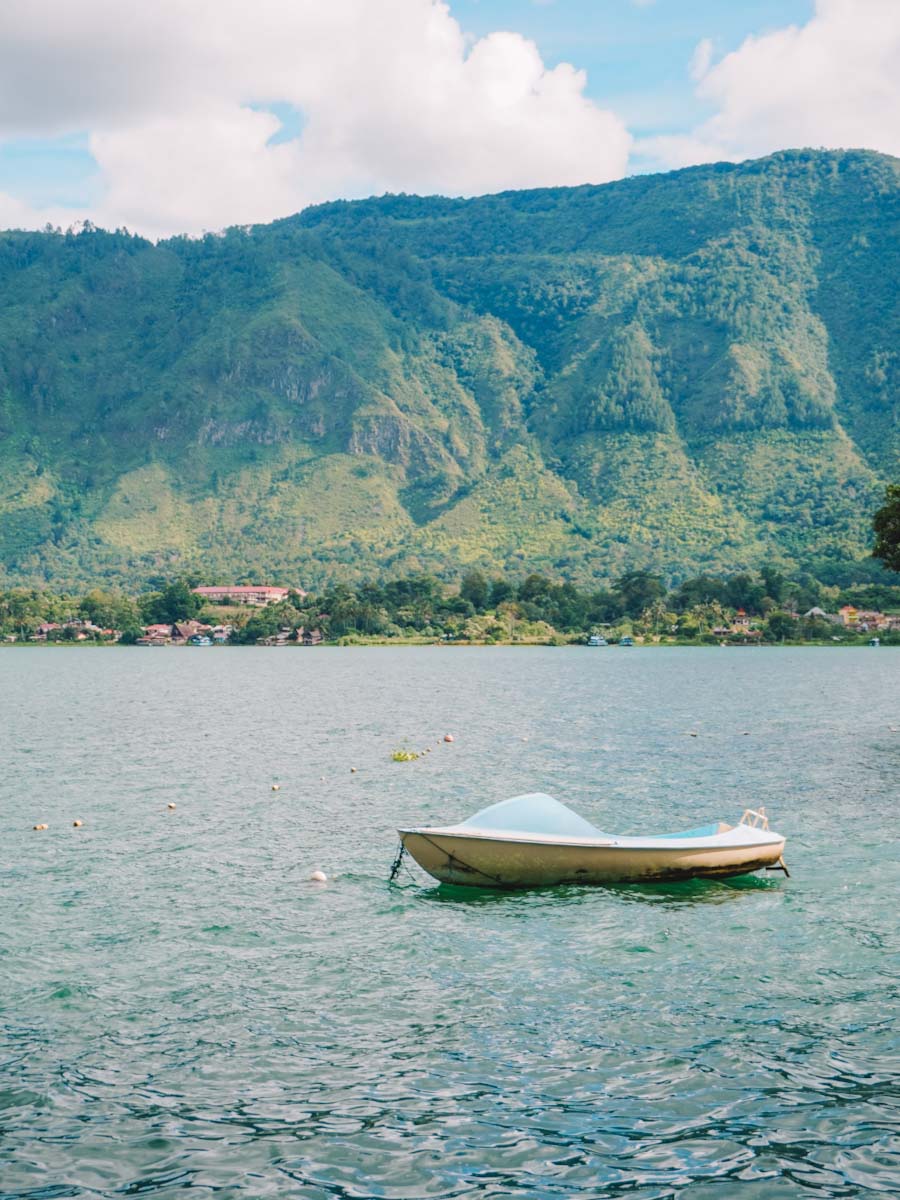
Day 9: Lake Toba to Bukit Lawang
From Lake Toba, make your way to Bukit Lawang. You can either take a private/tourist bus or take public transport via Medan. The travel time for both options is long, so leave Lake Toba early to arrive in Bukit Lawang before sunset. Also, for both options you first need to take the ferry back from Tuktuk (Samosir island) to Parapat (mainland).
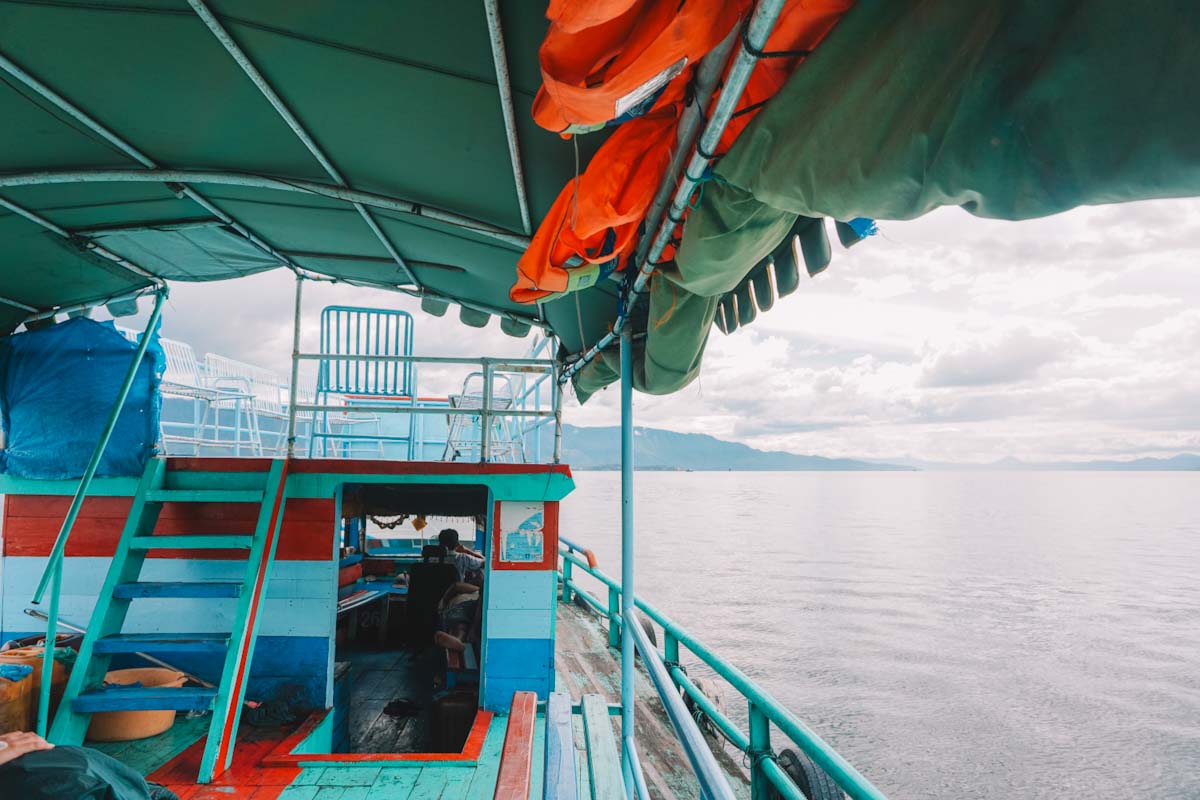
Option 1: Private/tourist bus
This is a direct transfer from Parapat to Bukit Lawang that will cost around 270,000 IDR and takes 8-9 hours. It is best to contact your accommodation in Bukit Lawang and ask them to help arrange this transportation. We recommend picking this option as it will be less stressful and more comfortable.
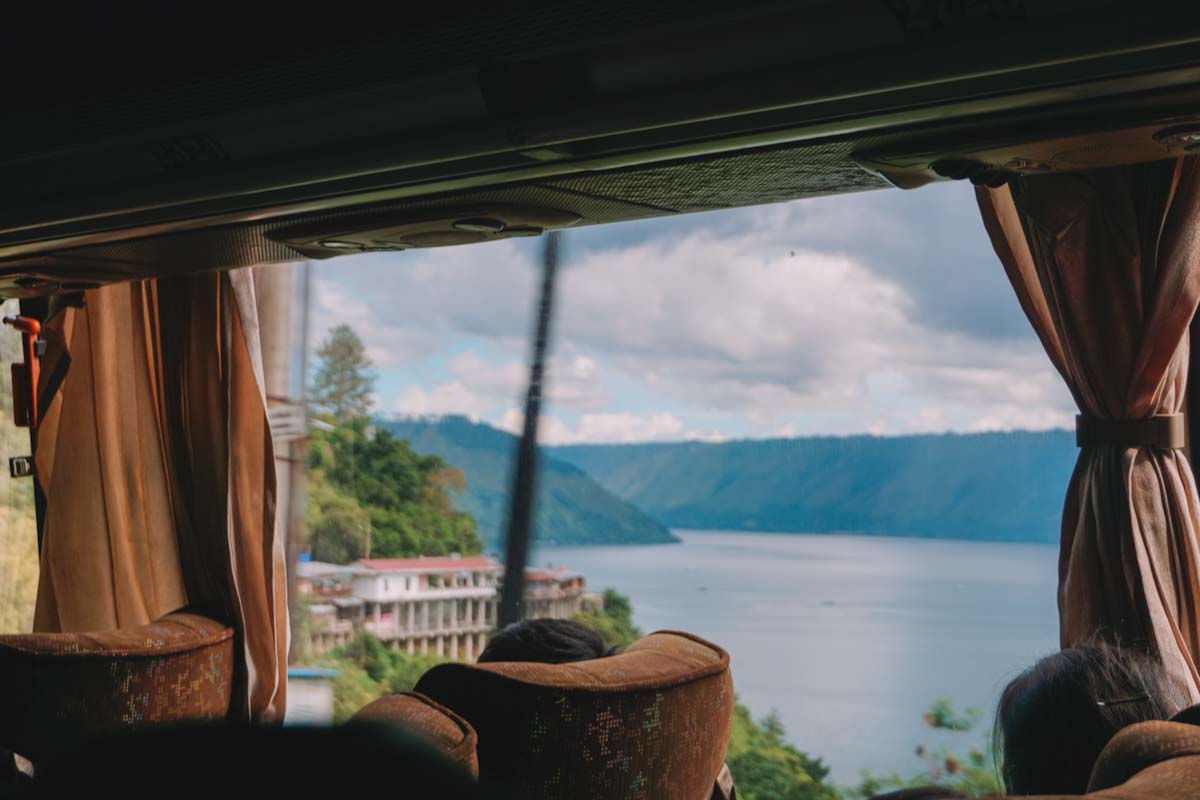
Option 2: Local bus
From Parapat you’ll take a local bus to Medan and from there you’ll take a second local bus to Bukit Lawang. This is what we did to save costs, but looking back we recommend picking the first option as this is a long and chaotic travel. If you’re up for an adventure, then these are the steps:
1. From Parapat, take the Sejahtera bus to Medan. This costs 30,000 IDR and takes 4,5 hours to arrive in Medan. You will be dropped off at Terminal Amplas (on google maps).
2. Next you need to go to the Pinang Baris Bus Station (on google maps). This is a 30-minute drive away from Terminal Amplas. So take a Grab here, this should cost less than 15,000 IDR.
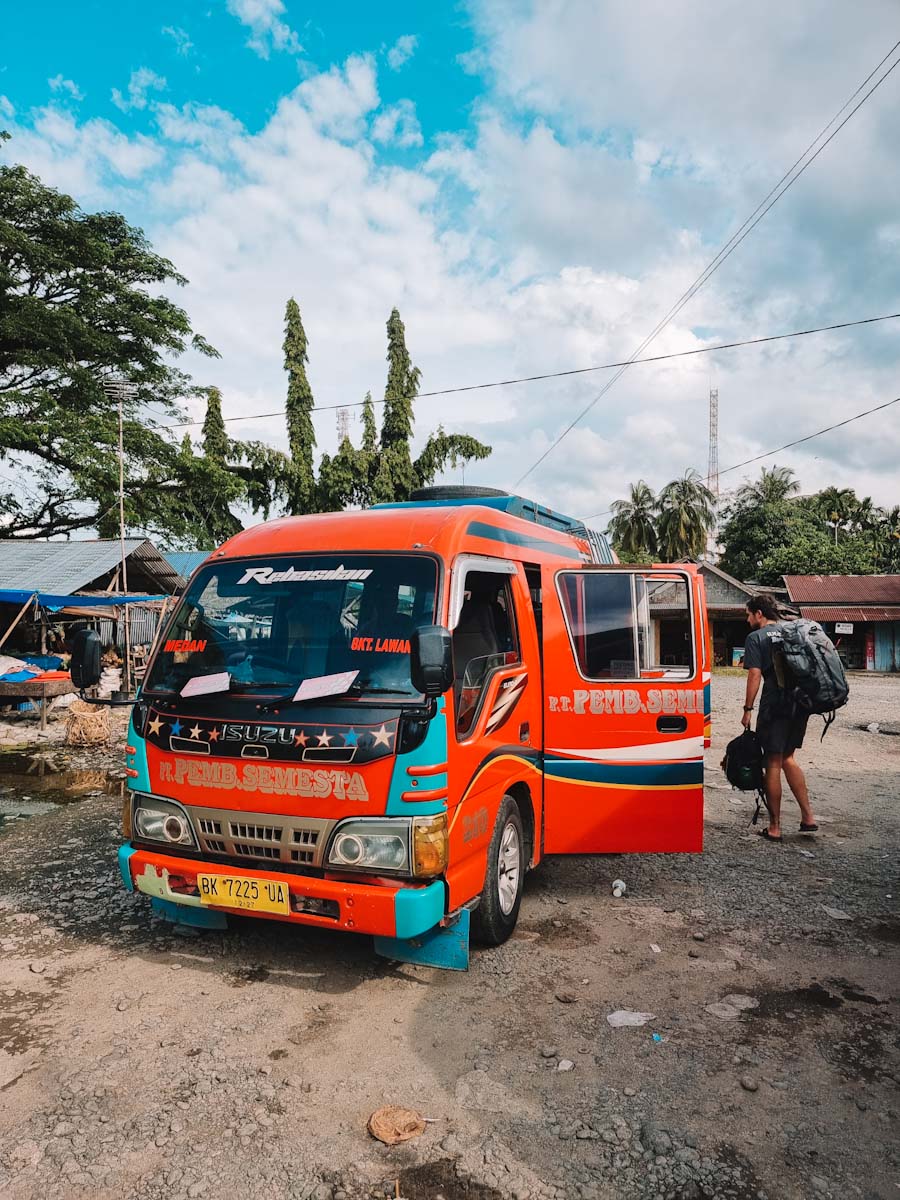
3. At the bus station, look for the red mini-buses with Bukit Lawang written on the windscreen. This bus will cost 50,000 IDR each and takes between 4-5 hours. Note that there are no fixed times, you just show up and wait for the bus to leave. Make sure to get here before 4:30pm, as this is when the last bus from Medan to Bukit Lawang often leaves!
4. The bus drops you about 1 km away from the center of Bukit Lawang. Therefore, you’ll need to take one final tuk tuk to your accommodation, which should be around 10,000Rp each.

Note:: we advise you to book your stay in Bukit Lawang in advance. Contact the accommodation to see if they can offer transportation.
Where to stay in Bukit Lawang
We stayed at Orangutan Bungalows and absolutely loved. The bungalows are located a bit further out of town and you’ll have to walk for about 10-15 minutes (through the jungle) to reach it. So it is a bit more difficult to get to, but because of this you are really staying in the jungle (when we woke up the next morning, there were orangutans less than 100m from our room!). It is well-maintained, peaceful, and the food is good.
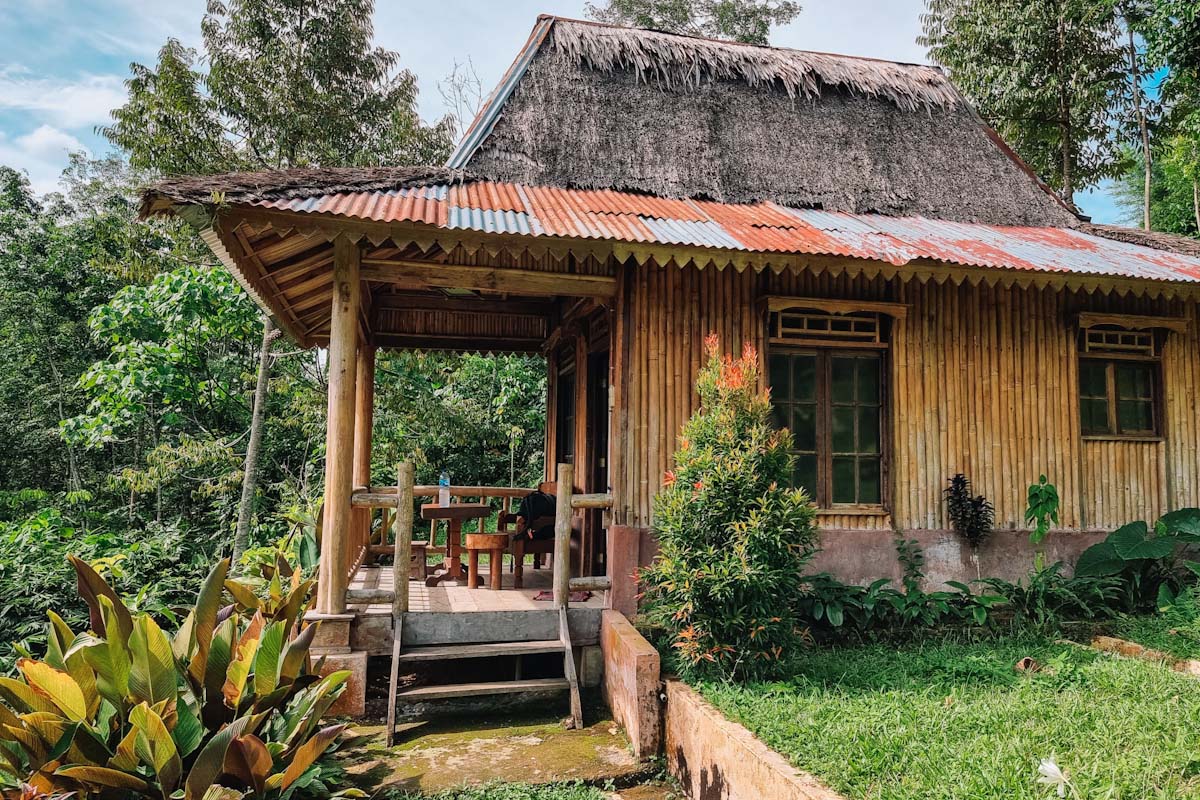
Day 10-13: Bukit Lawang
Located at the foot of the Bandahara mountain lays Bukit Lawang, which translates to “mountain door”. Bukit Lawang is a popular destination within North Sumatra because of the density and diversity of the wildlife in the area. It is especially famous for its orangutans, as it is only one of the few places left in the world to see orangutans in their natural habitat.
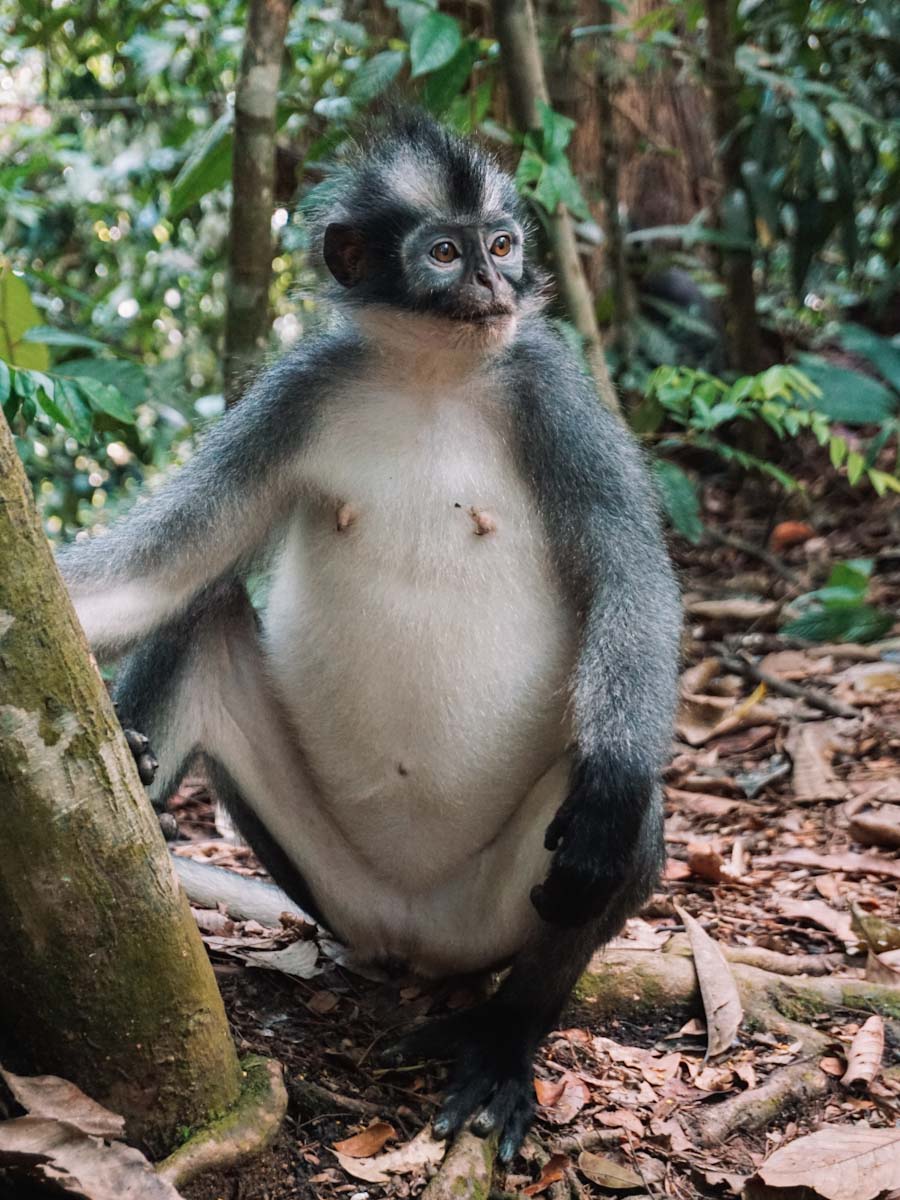
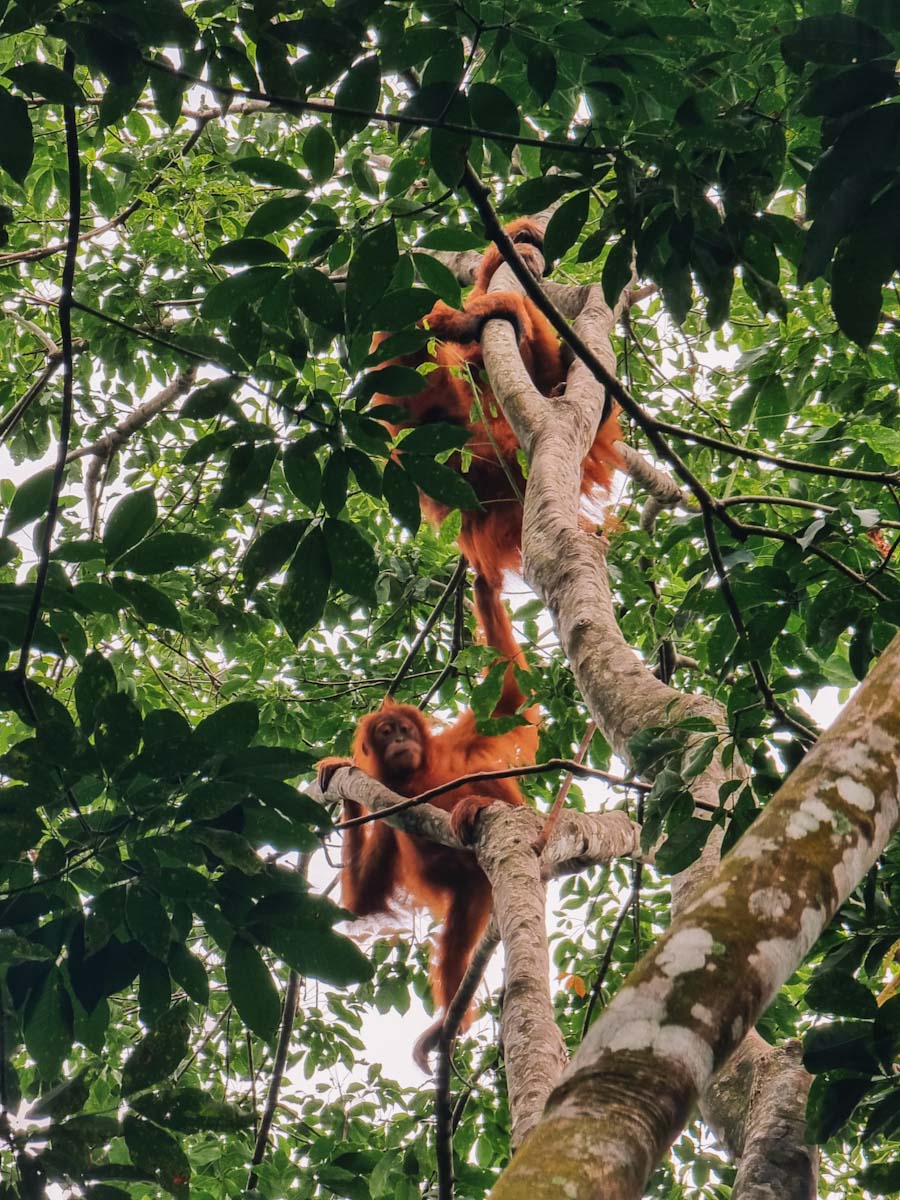
Jungle treks
When in Bukit Lawang, doing a jungle trek is a must. There are many options to choose from, they range from single day hikes up to 2 week treks that lead you deep into the jungle. We’d recommend doing at least a 2 day 1 night jungle trek. It is an incredible experience to spend a night in the jungle and see wildlife from up close.
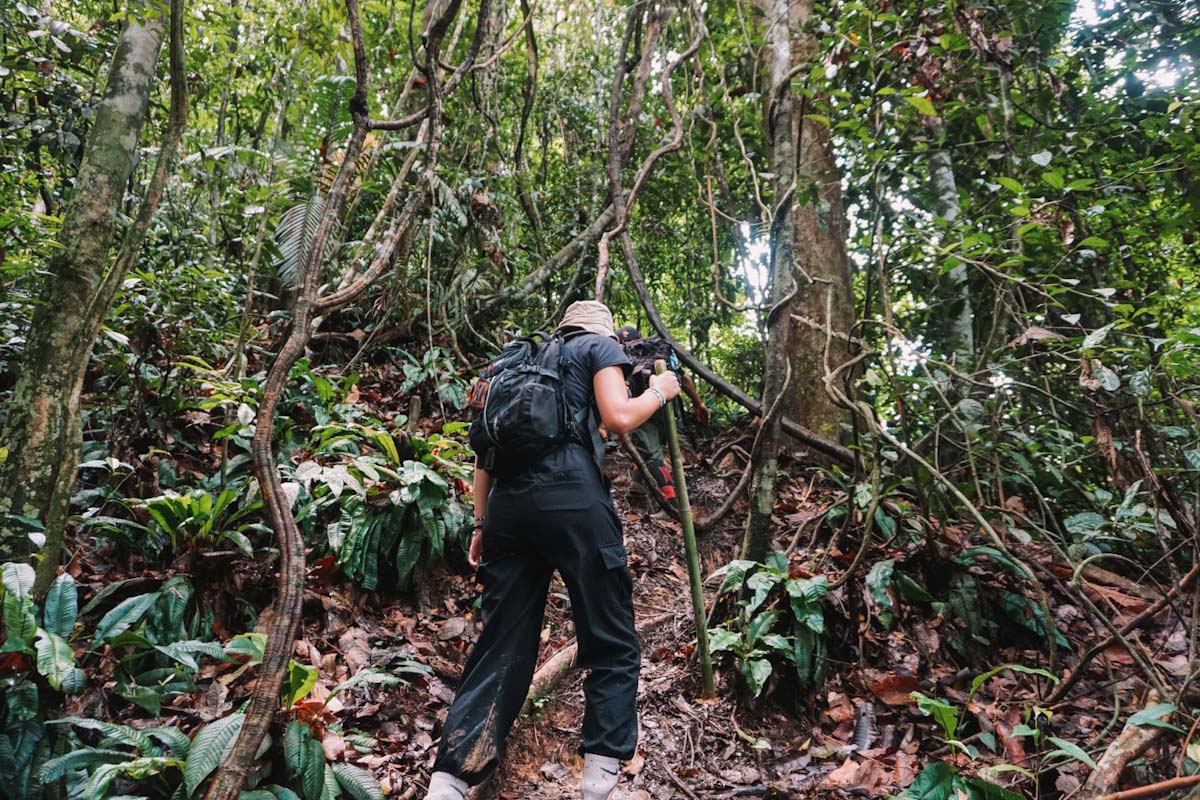
We went with a local guide named Rian, who was very nice and funny. He kept us entertained throughout our hike and brought everything we needed with him. You can contact him via his WhatsApp: +62 81397670252.
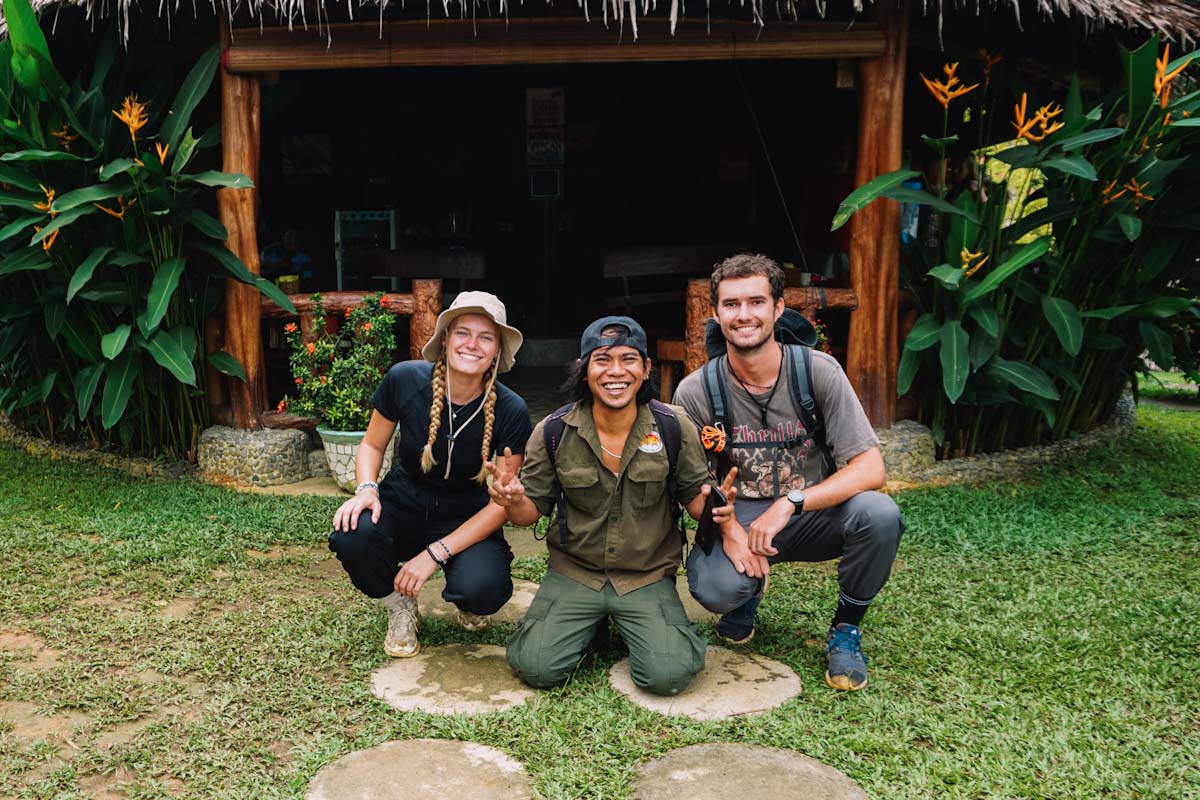
Day 14: Bukit Lawang to Pulau Weh
The final part of this 3 week Sumatra itinerary will be on the tropical island of Pulau Weh. To get here, you’ll need to first go back to Medan. To do this you can simply follow the same route back but in reverse. From Medan you need to go to Banda Aceh, which can be done by flying or by taking an overnight sleeper bus. Flights can be relatively cheap if you book them in advance and only take 1.25 hours.
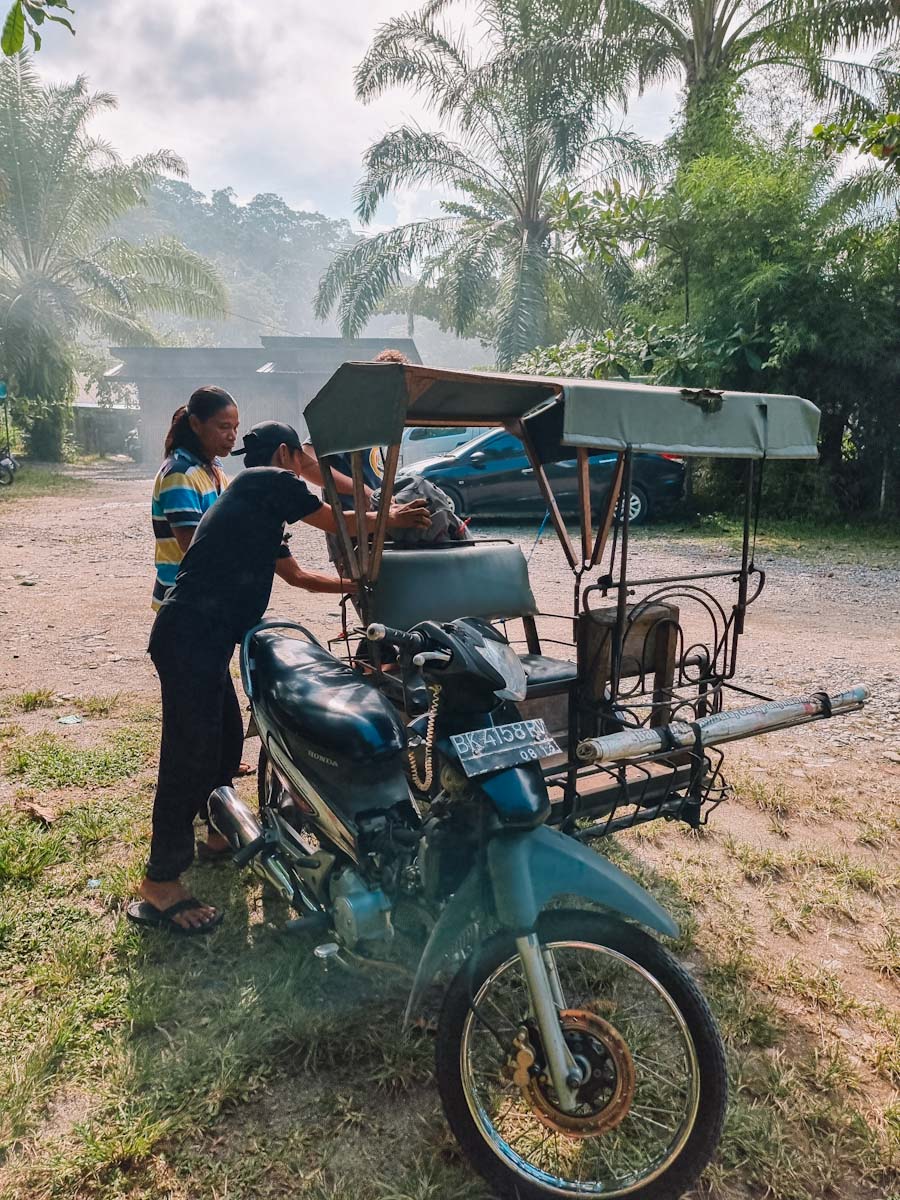
If you decide to take the overnight bus, we recommend going for the most well-known (and most comfortable) bus called the Sempati Star. This costs 250,000 IDR per person and takes around 12 hours to get from Medan to Banda Aceh.
Wanting to book?
Follow the links below for all your accommodation, transport, & activity needs!
From Banda Aceh, the only way to get to Pulau Weh is by ferry. There are two ferries to choose from, the fast (more expensive) and the slow (cheaper) option.
- The fast ferry (Express Bahari) takes 45 minutes and costs 65,000 IDR.
- Daily: 8am, 10am, 12pm, 4:15pm (no 12pm ferry on Fridays)
- The slow ferry (ASDP car) takes 2 hours and costs 35,000 IDR.
- Daily: 8am and 5pm (on Fridays, there is also a 2:30pm ferry)
You will arrive at the harbour called Pelabuhan Balohan. From here you’ll need to take a tuktuk (also called “becak”) to your accommodation. We recommend organising this with your accommodation beforehand.
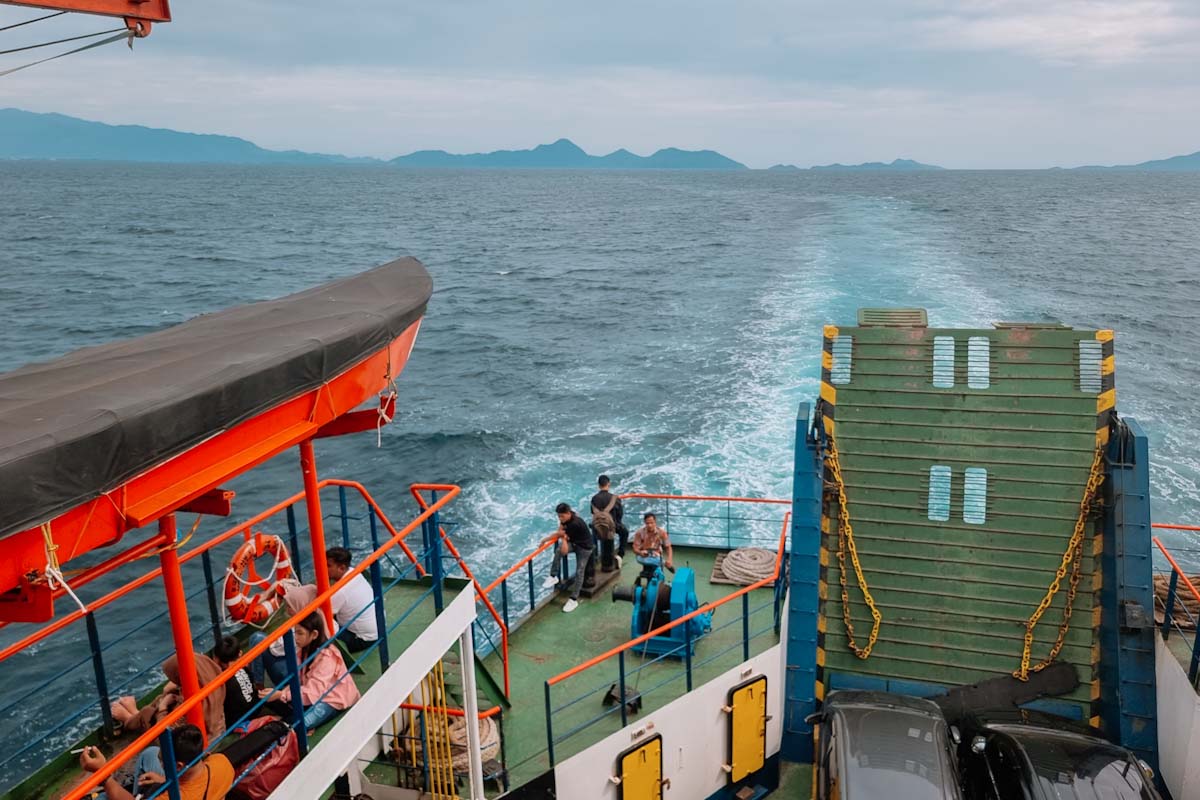
Day 15-19: Pulau Weh
Pulau Weh is the northern most island in Indonesia and is a great place to end your 3 week Sumatra itinerary! It is known for its diving/snorkelling, its relaxed vibe, stunning beaches and great tropical scenery. Pulau Weh is a great spot to escape the crowds and chaos to relax. Read everything you need to know in our Pulau Weh – island guide!
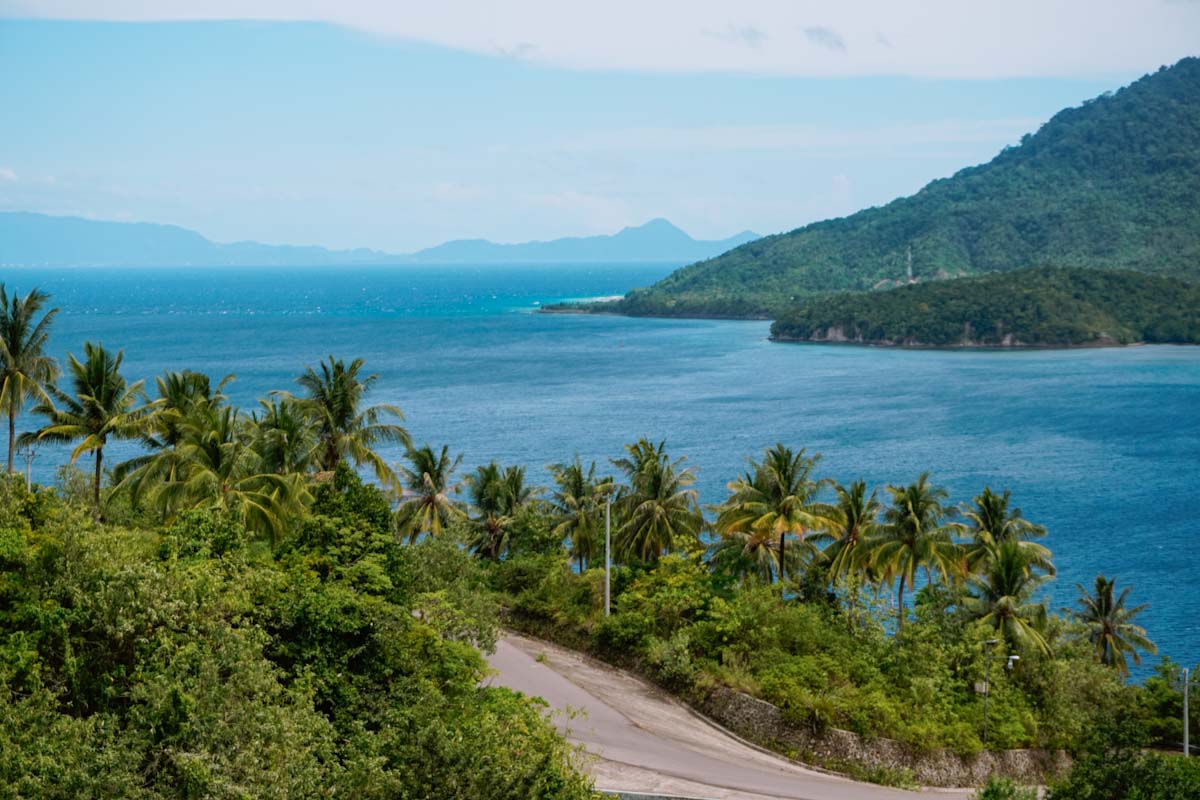
Where to stay on Pulau Weh
We stayed at Santi Garden Bungalows which was a perfect budget option. The rooms are basic but they have everything you need, and the owner is super kind. We loved the location as it was very laid-back, with great snorkelling spots and good restaurants nearby! You can check out the Santi Garden Bungalows here!
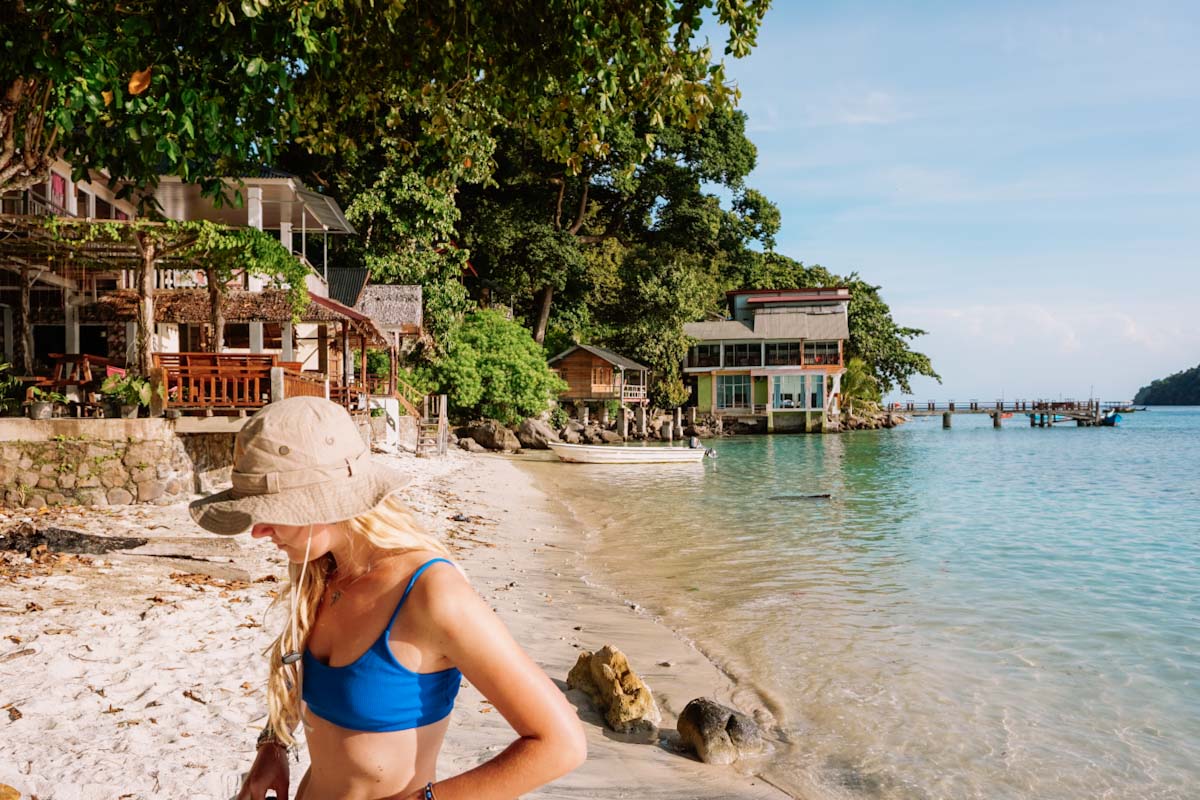
Day 20: Pulau Weh to Banda Aceh
To get back to Banda Aceh, make your way back to the harbour (Pelabuhan Balohan) by tuktuk. At the harbour, you can again opt for the fast or slow ferry, these are the times:
- The fast ferry (Express Bahari) takes 45 minutes and costs 65,000 IDR.
- Daily: 8am, 2:30pm, and 4pm
- The slow ferry (ASDP car) takes 2 hours and costs 35,000 IDR.
- Daily: 8am, 12pm, and 4pm
If you have a flight from Banda Aceh it’s better to leave Pulau Weh a day in advance, to account for ferry delays or cancellations due to sea conditions.

Where to stay in Banda Aceh
We stayed at Mulia Homestay which was perfect! The owner was extremely kind and helpful and the homestay has a big and clean kitchen that is free to use. You can find out Mulia Homestay here!
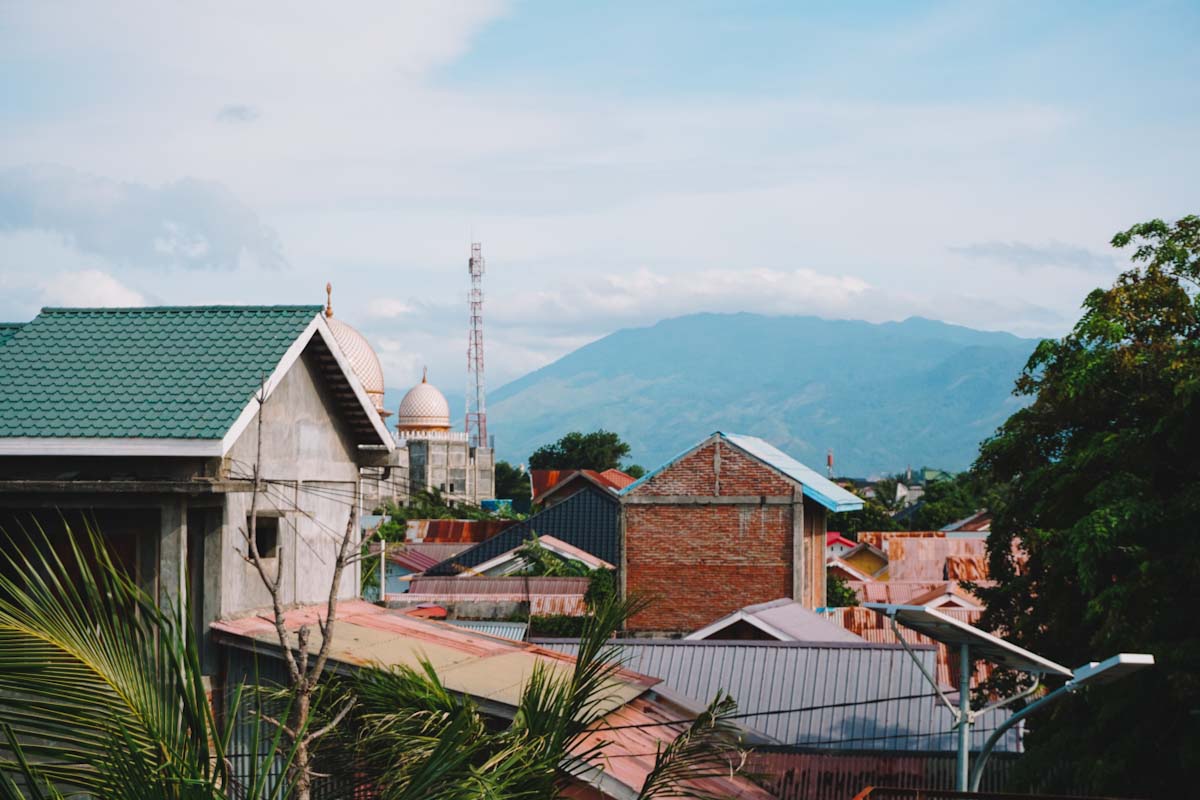

Note: Banda Aceh is under Sharia law. Hence drinking alcohol is strictly forbidden. When outside keep your shoulders and knees covered.
Day 21: Fly out of Banda Aceh
The last stop of this itinerary is Banda Aceh, as you can continue or conclude your trip by flying out of its international airport. Sadly, this city is known for a massive natural disaster that happened about 20 years ago. In December 2004, Banda Aceh was hit by an earthquake and tsunami that killed many inhabitants and destroyed more than half of the city. When you spend half a day here, these are some of the things to see:
Tsunami Memorial Museum – The tsunami museum in Banda Aceh is very interesting and well worth a visit. It costs 15,000 IDR for foreigners to enter and gives you more insights about what happened and how the city managed to recover and rebuilt itself.
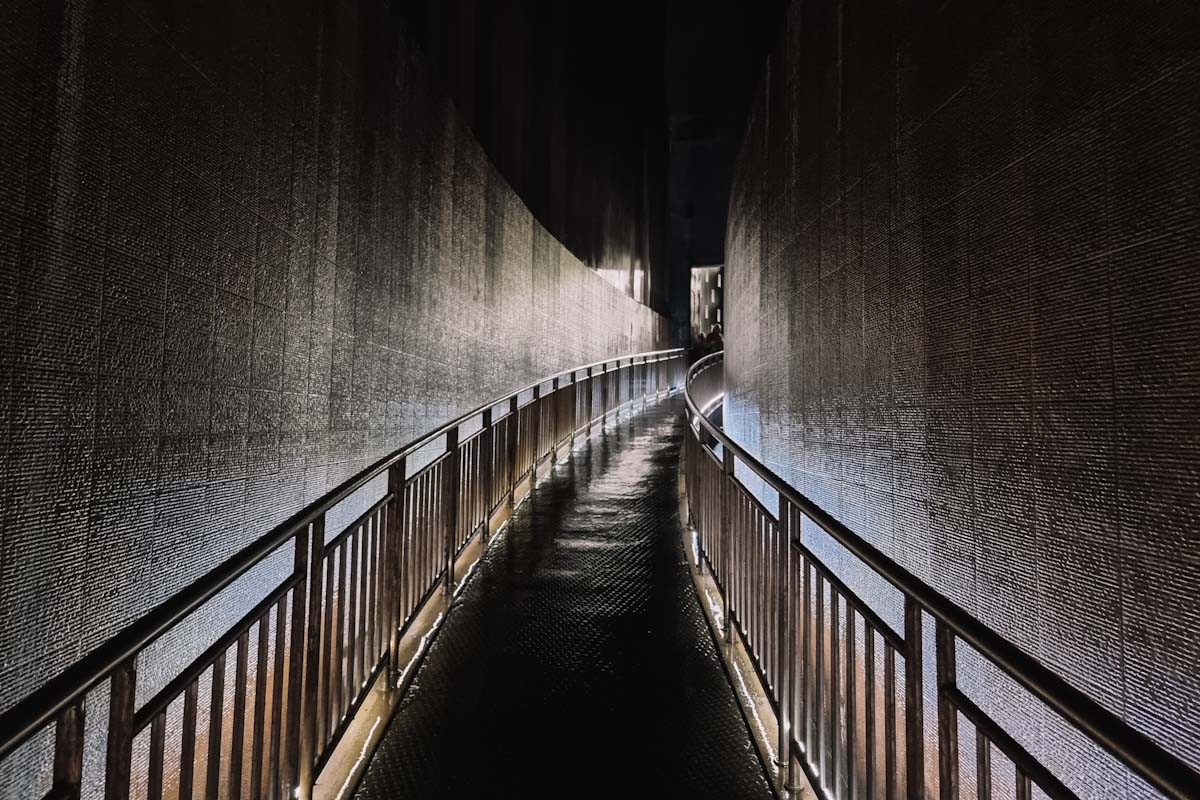
Boat on the house – This fishing boat was thrown into the city by the tsunami and got stuck on someone’s house. In the boat, more than 20 people got protected from forces of the tsunami by staying on the boat. The boat on the house is an impressive sight that serves as a memorial of what happened.
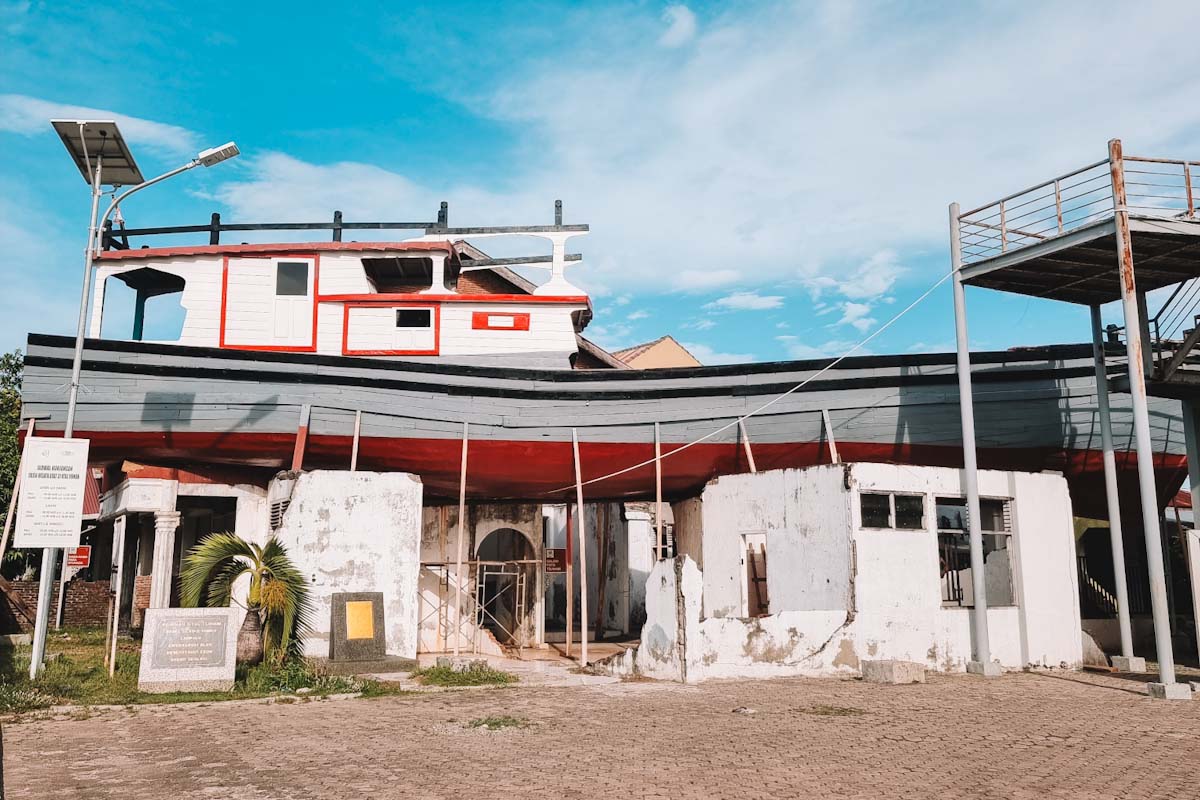
Local food – Besides these historic sites, we would also recommend you to try some last local cuisines. Our homestay recommended checking out a noodle restaurant called Mie Razali which was definitely worth it!
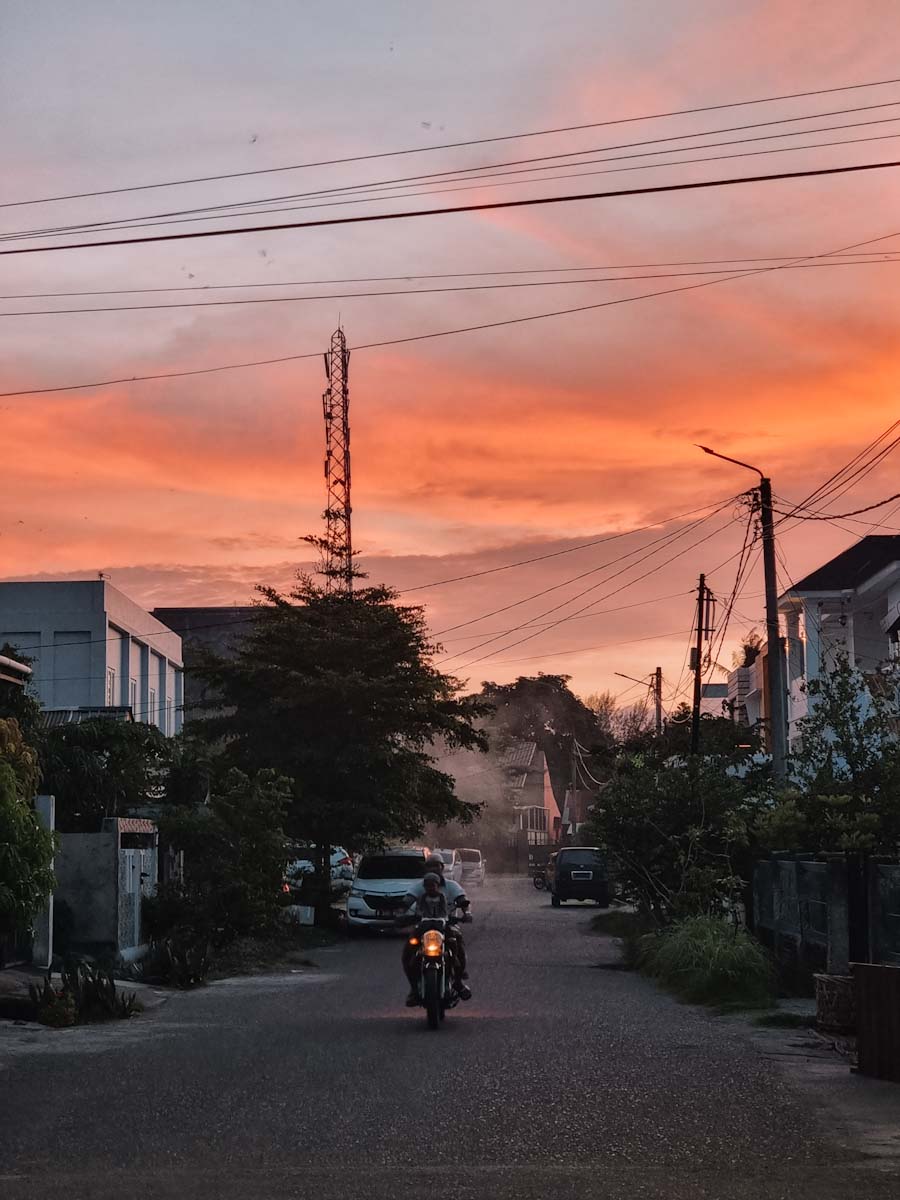

Disclaimer: This blog contains affiliate links. When you book through our links we can earn a small commission, but the price you pay stays the same, it’s a win win! We’d really appreciate the support.

